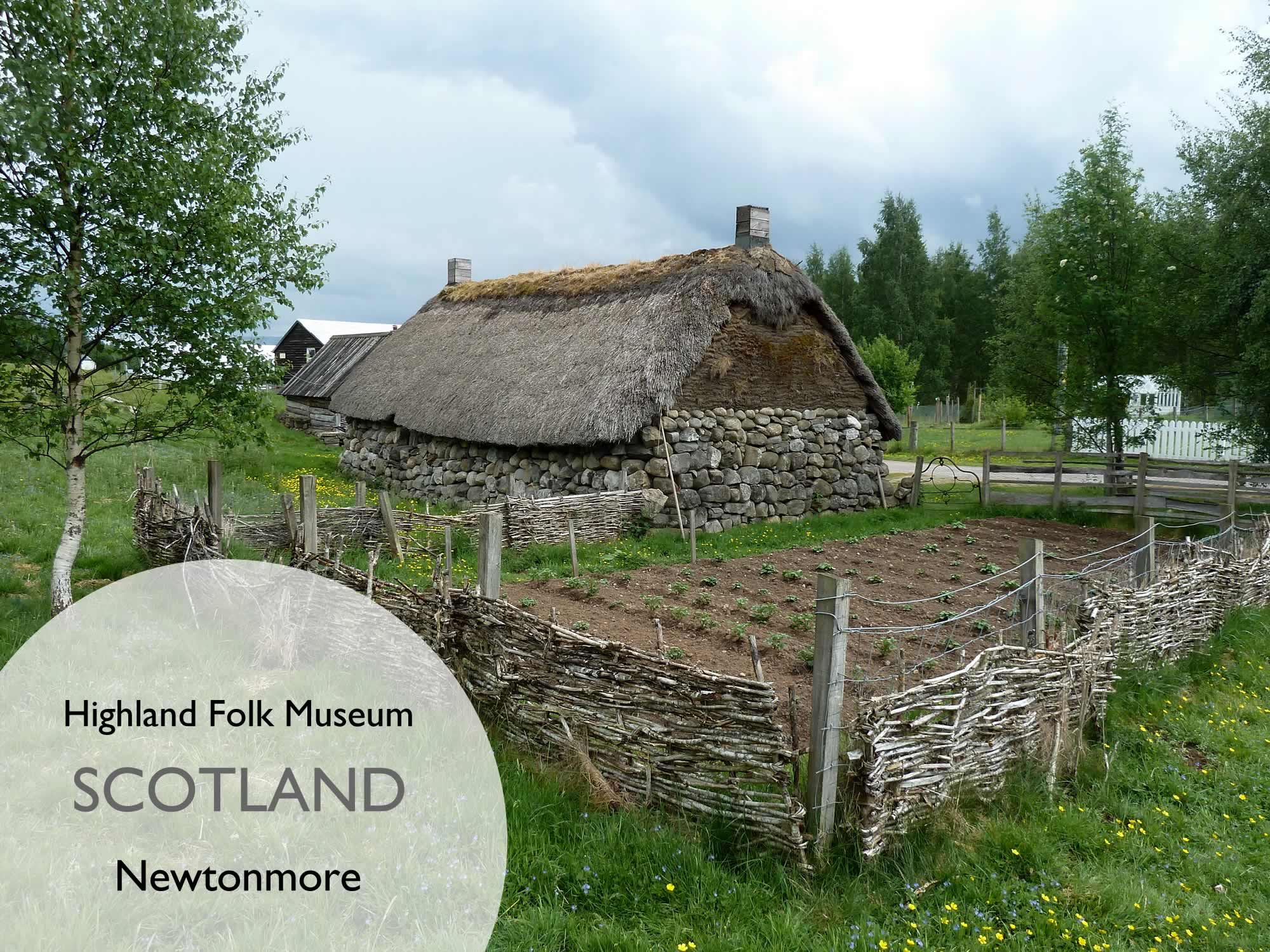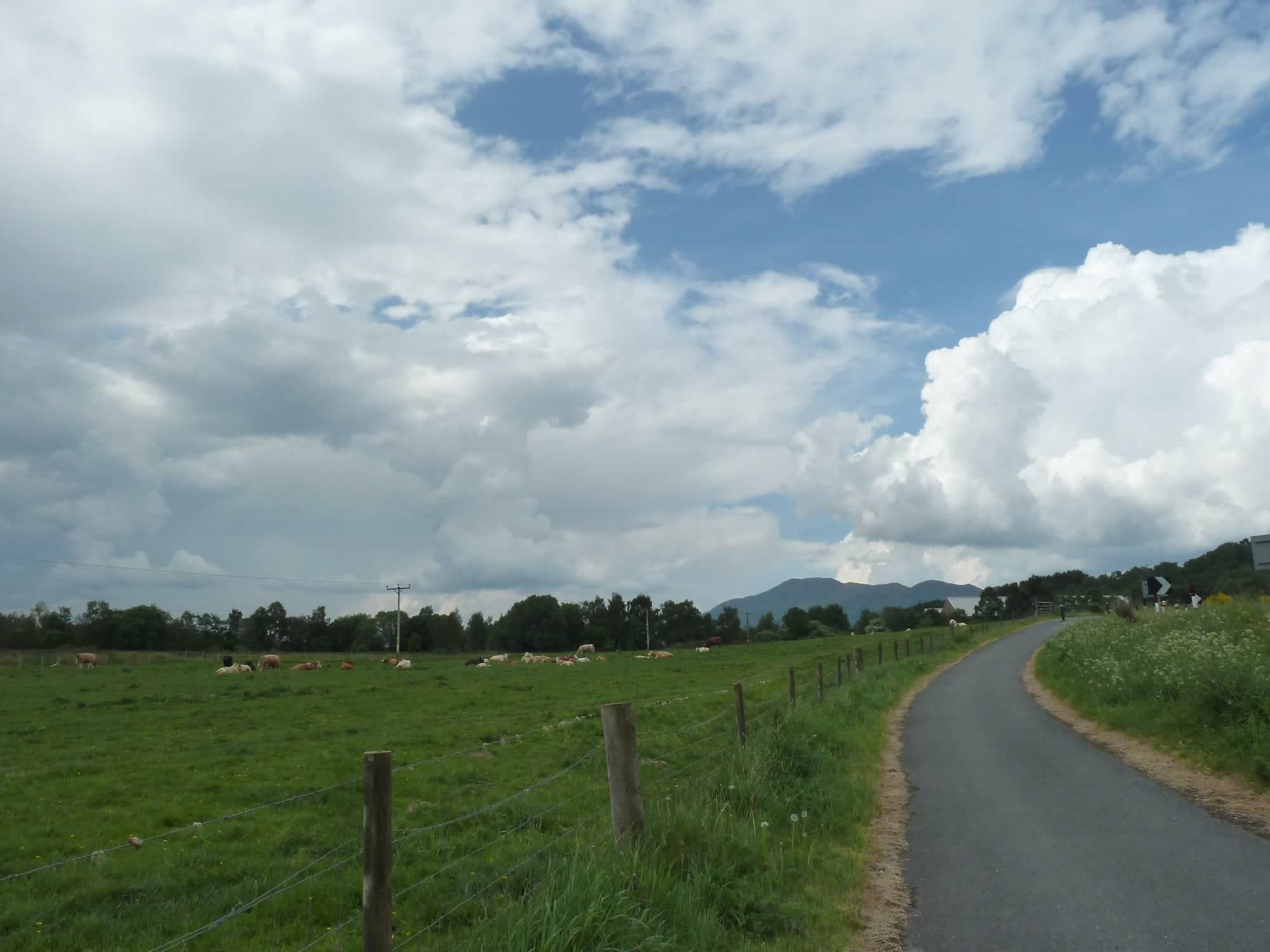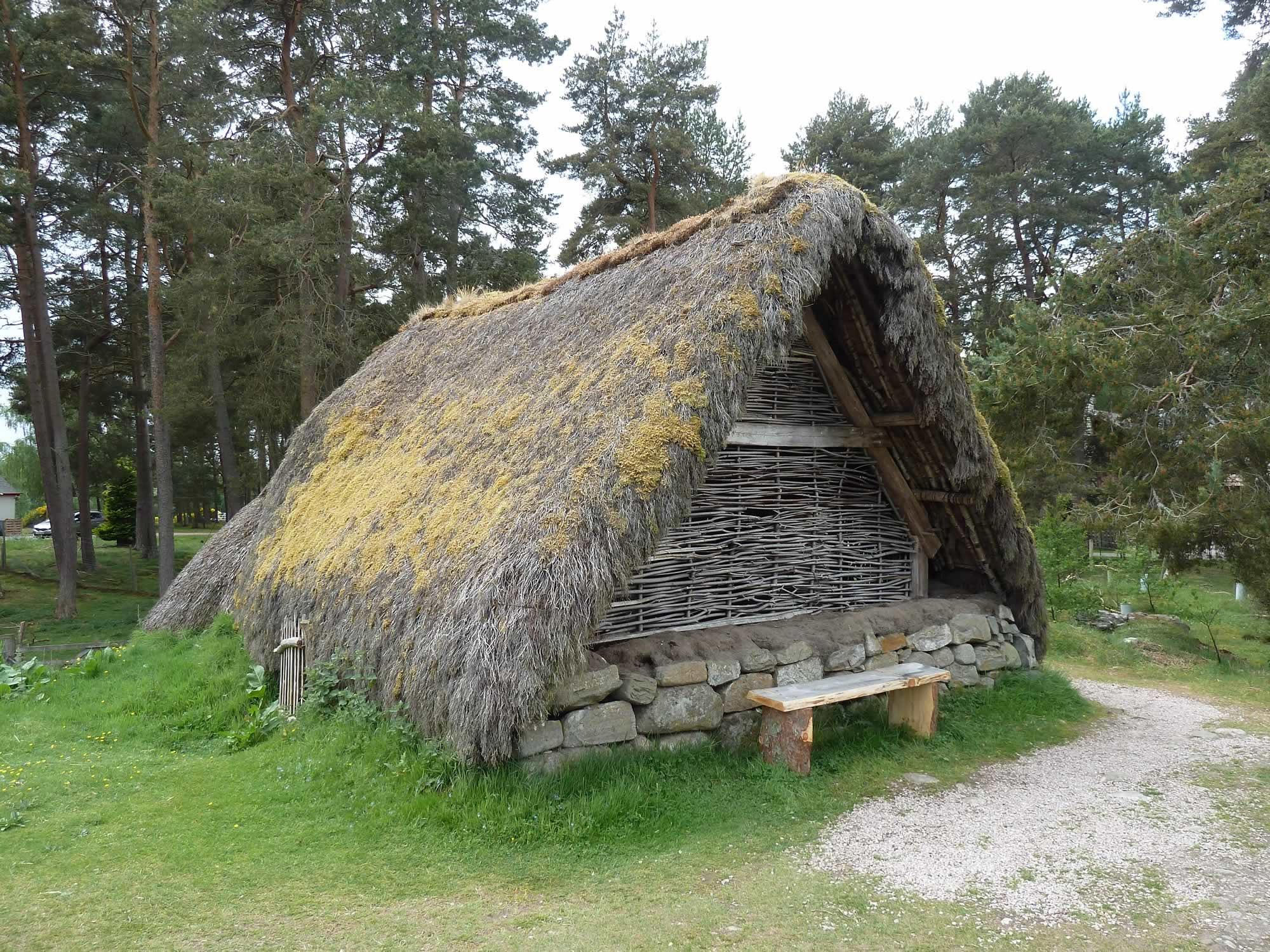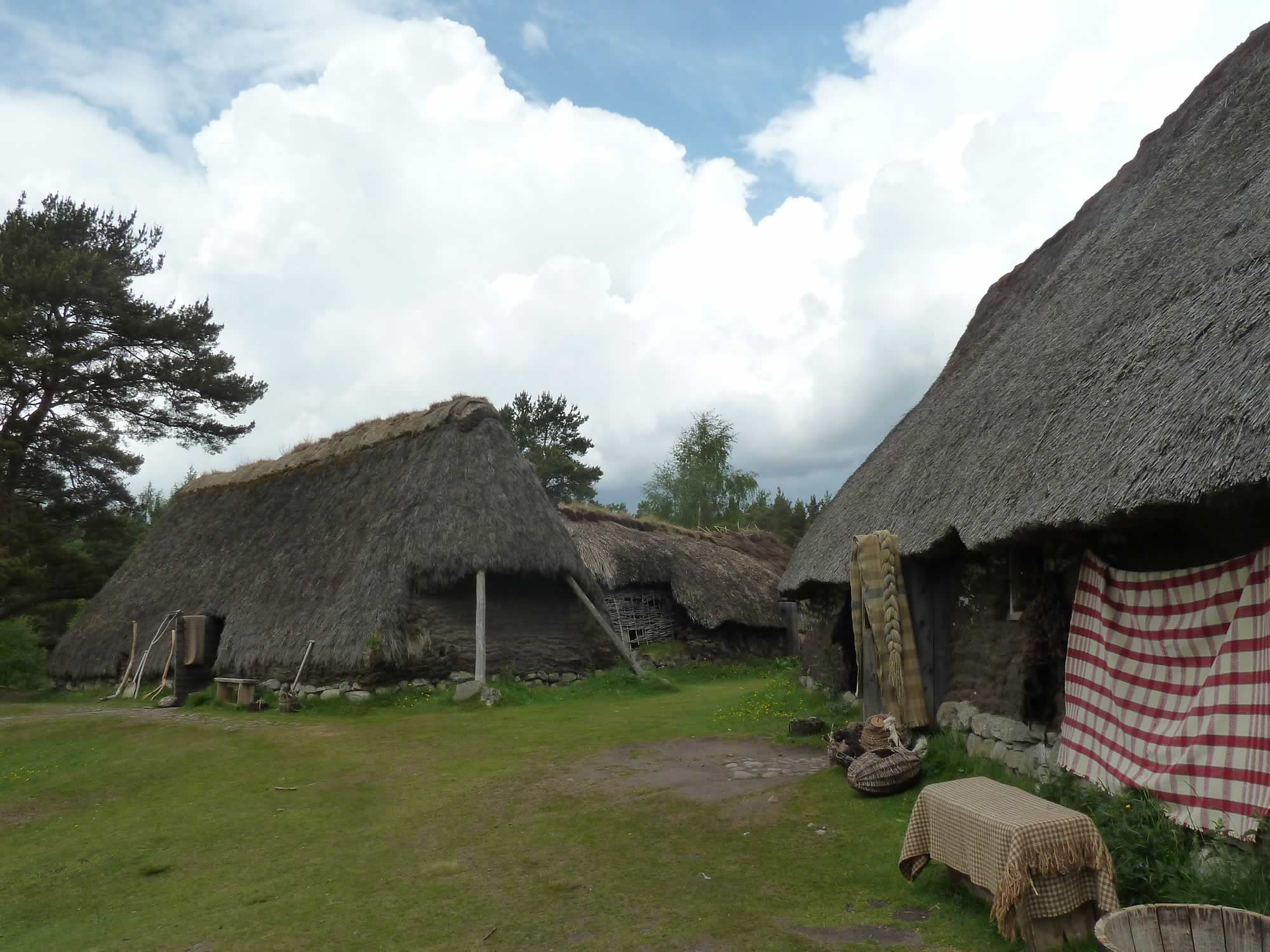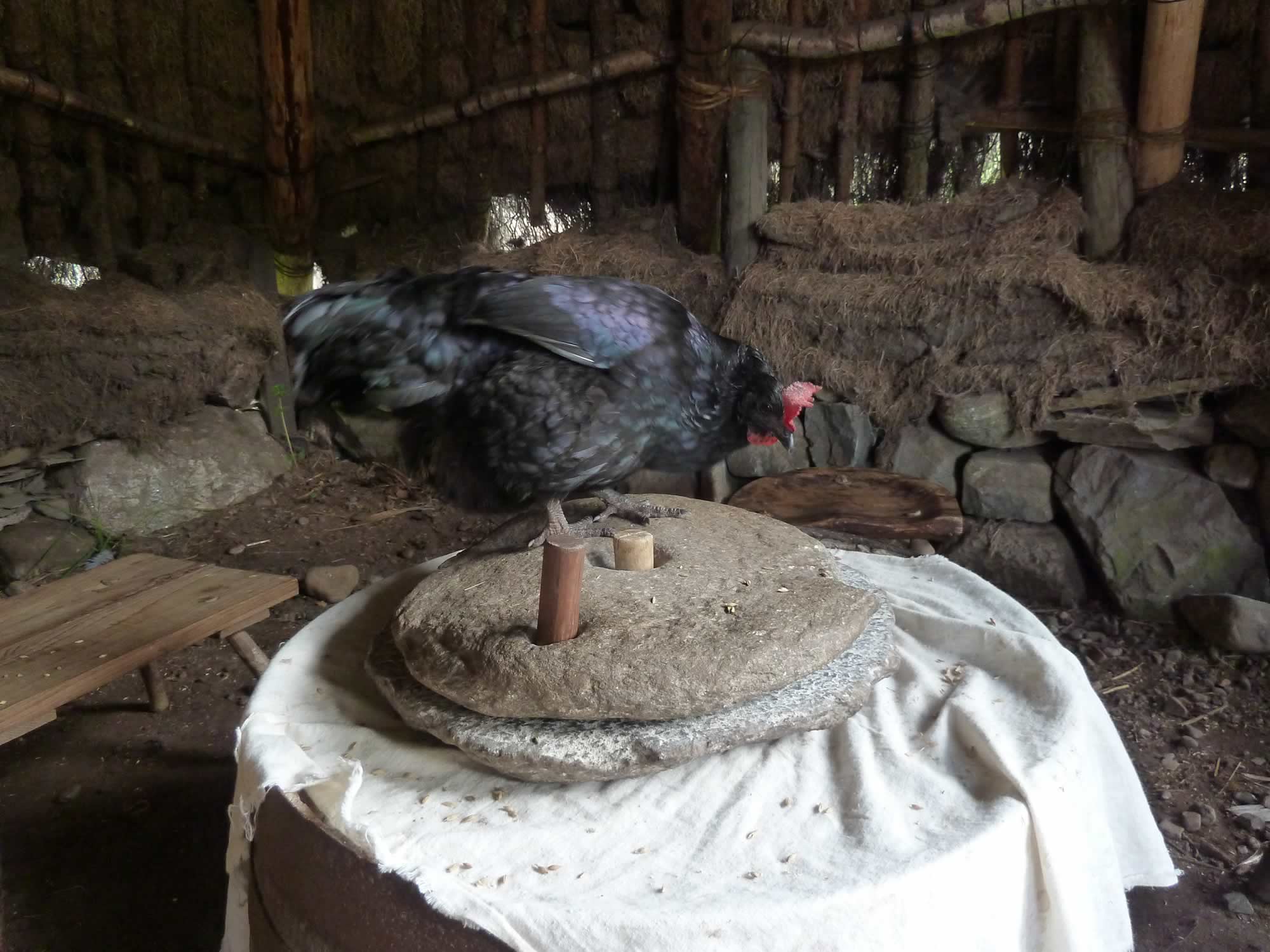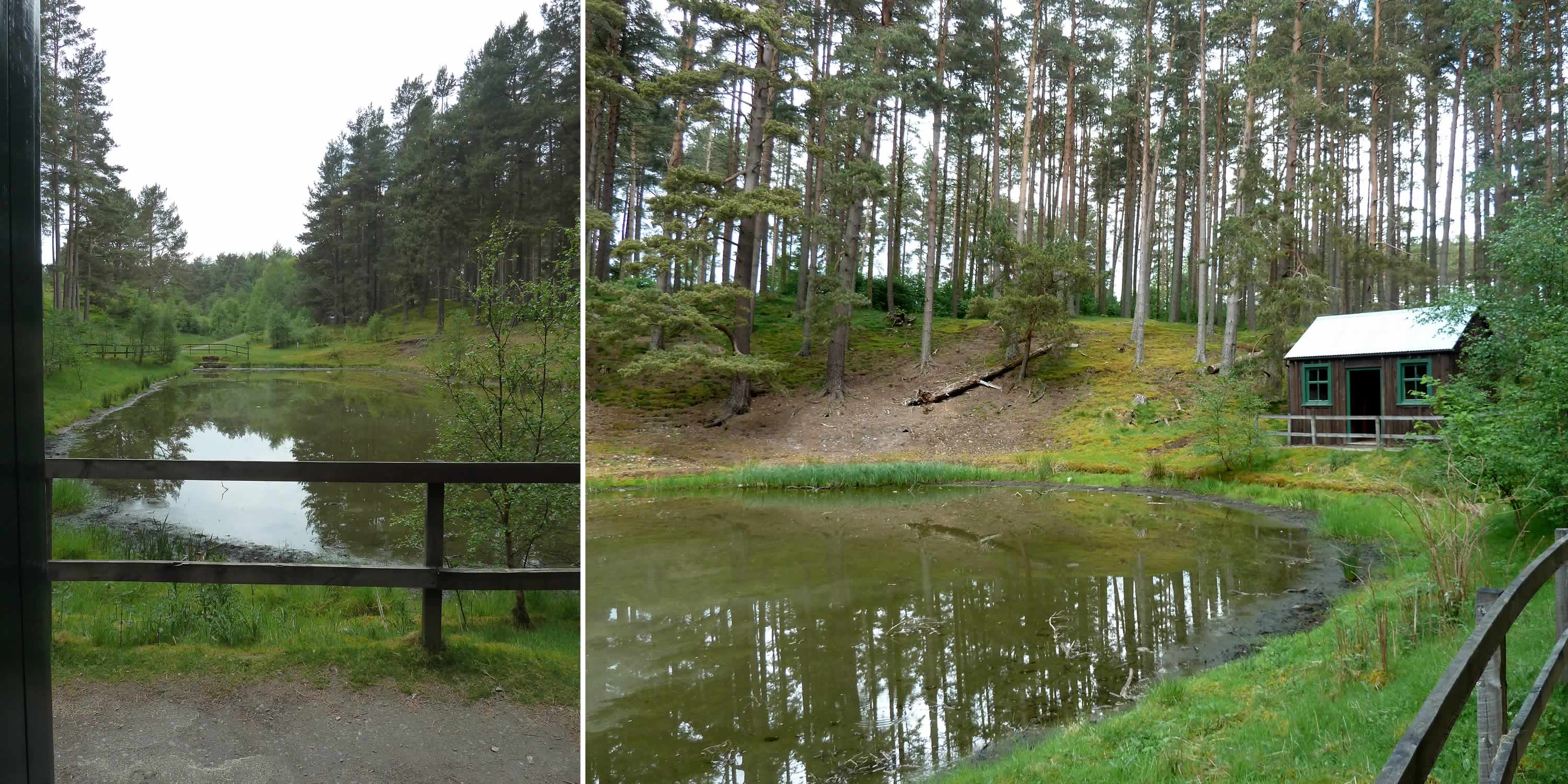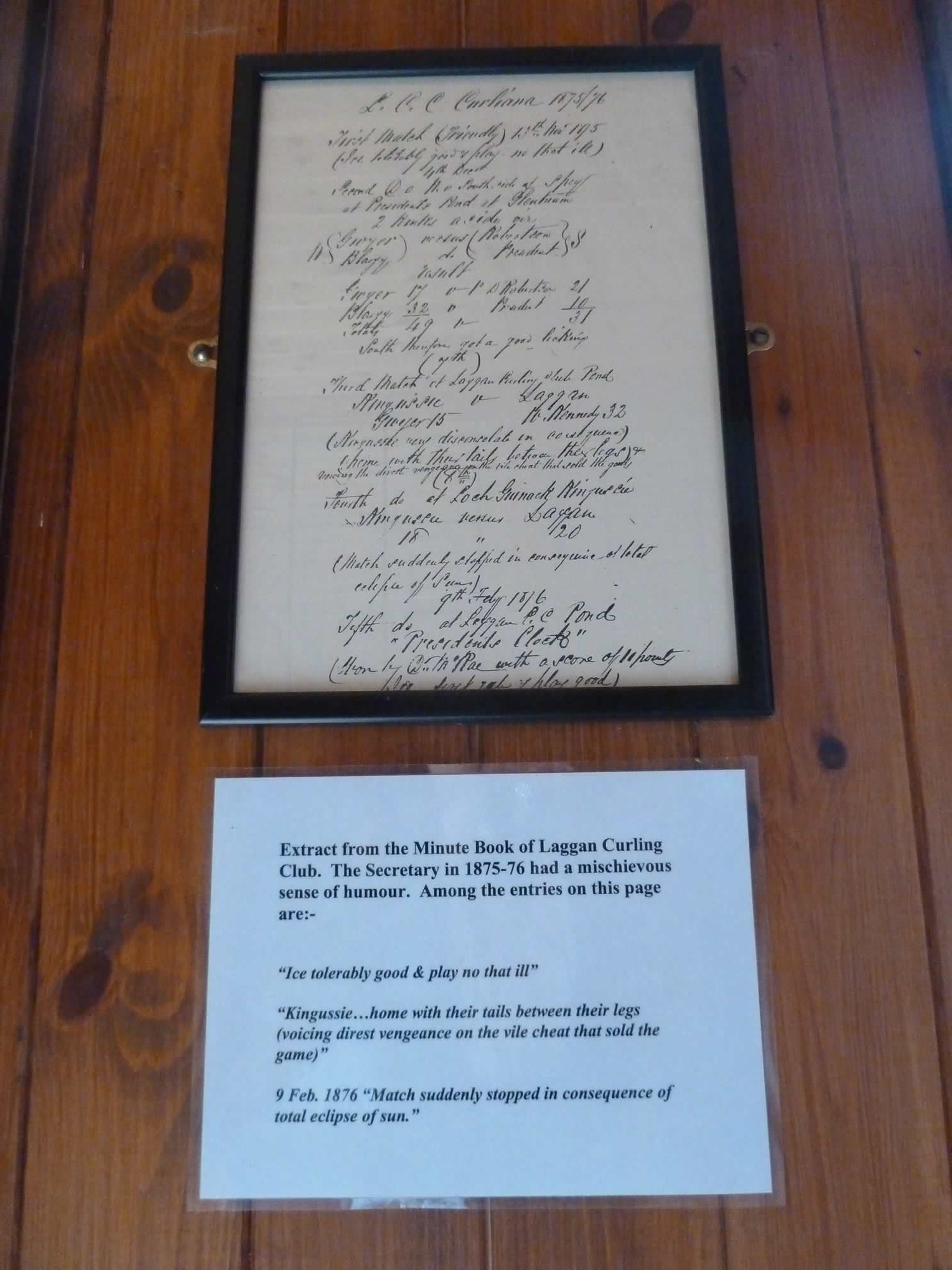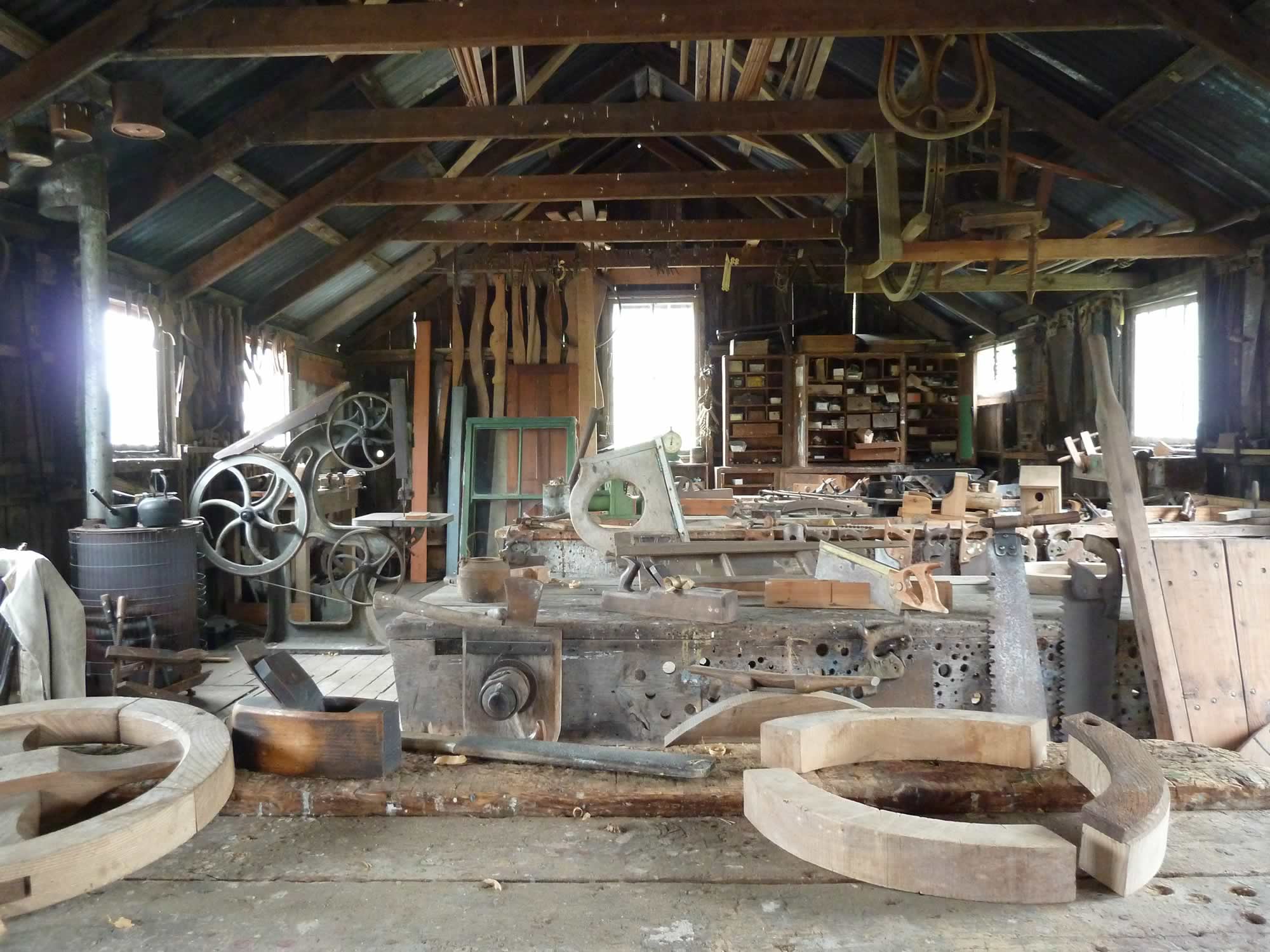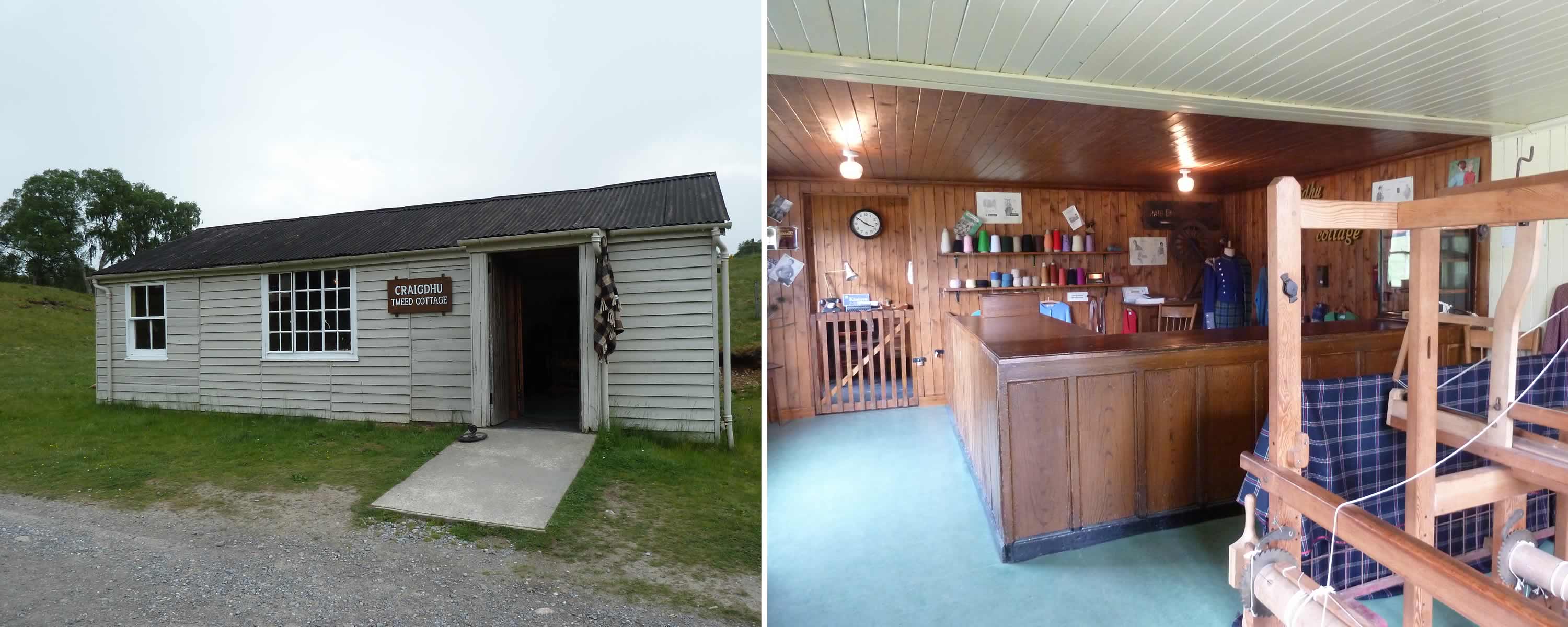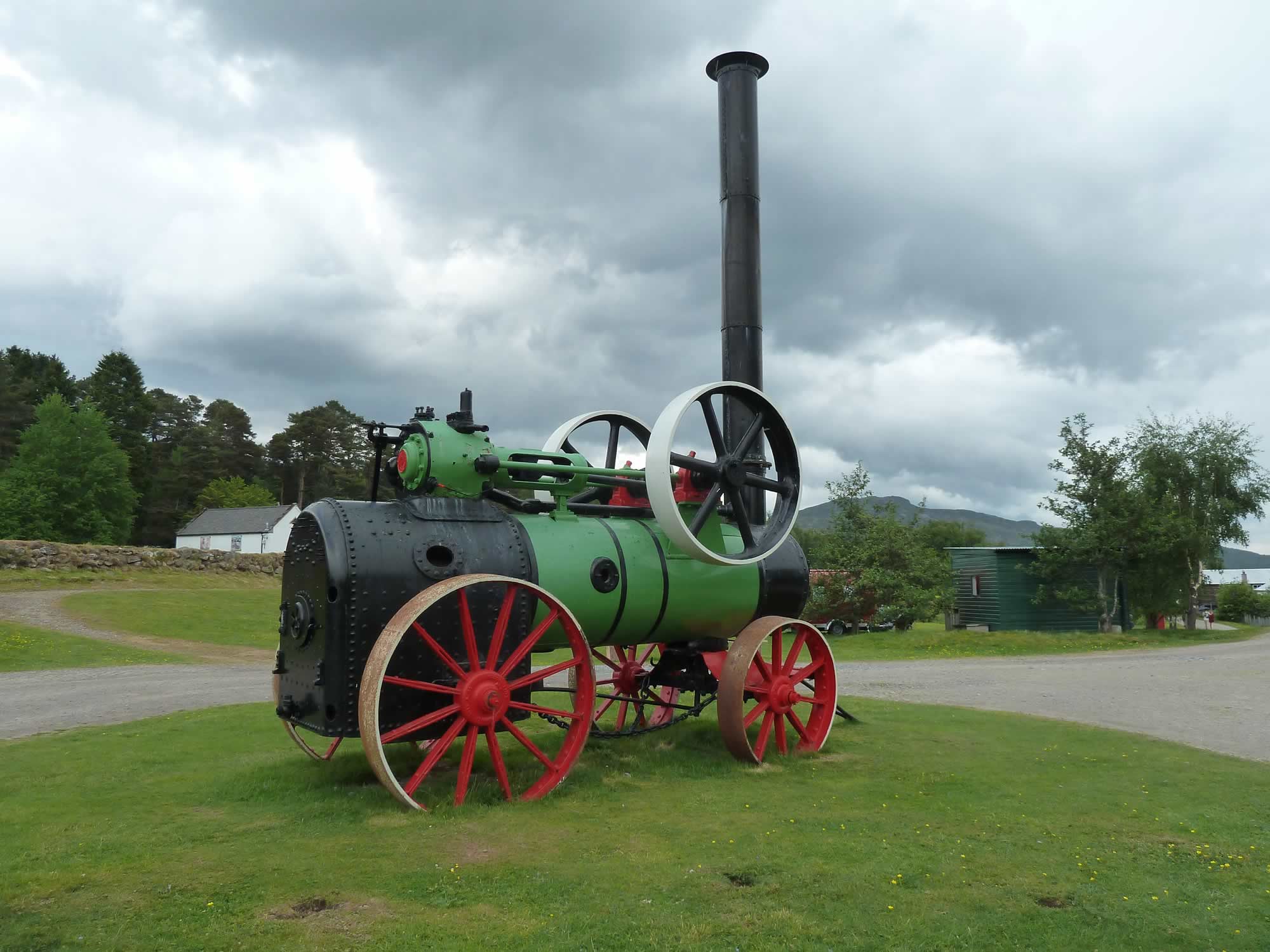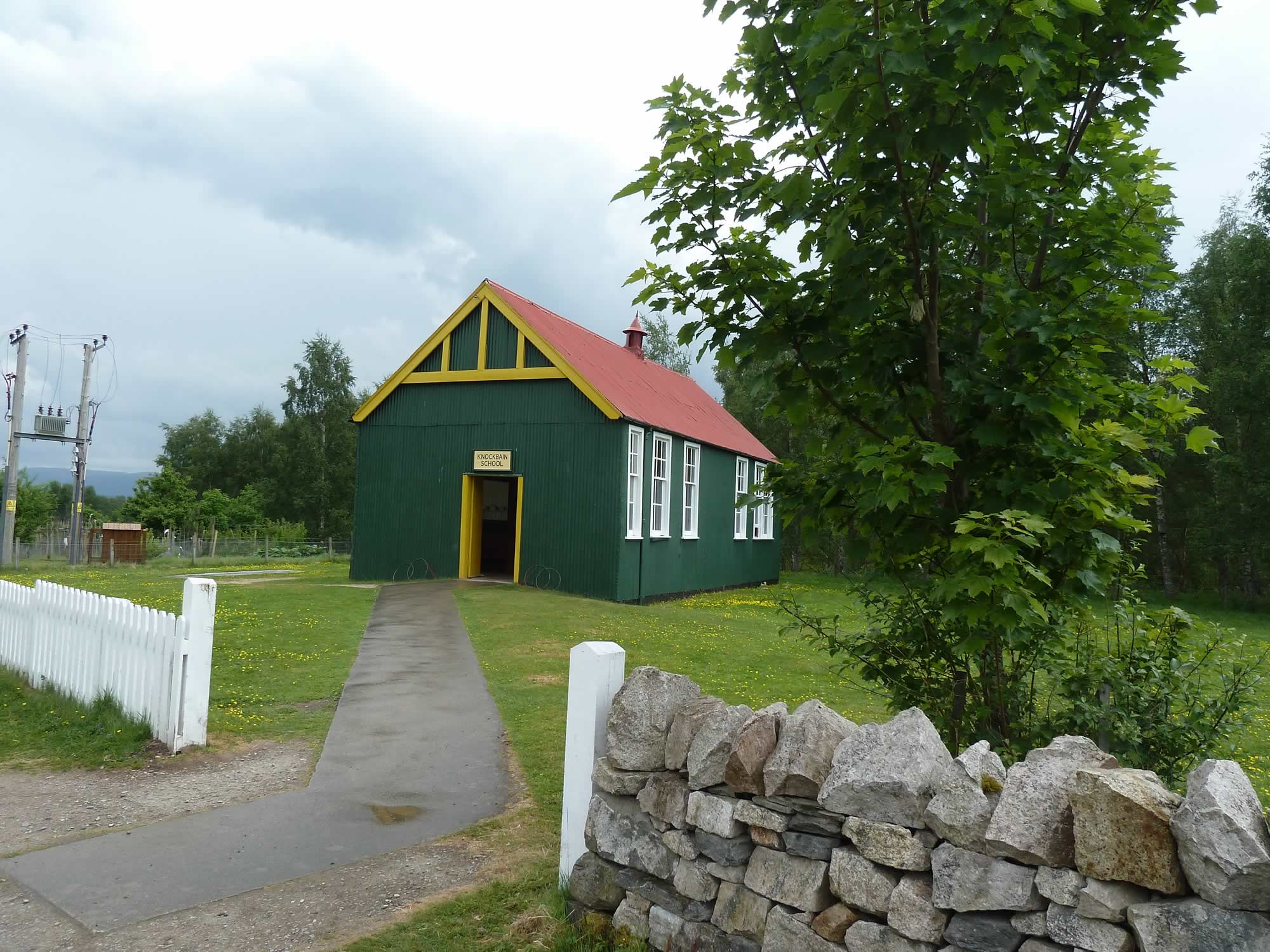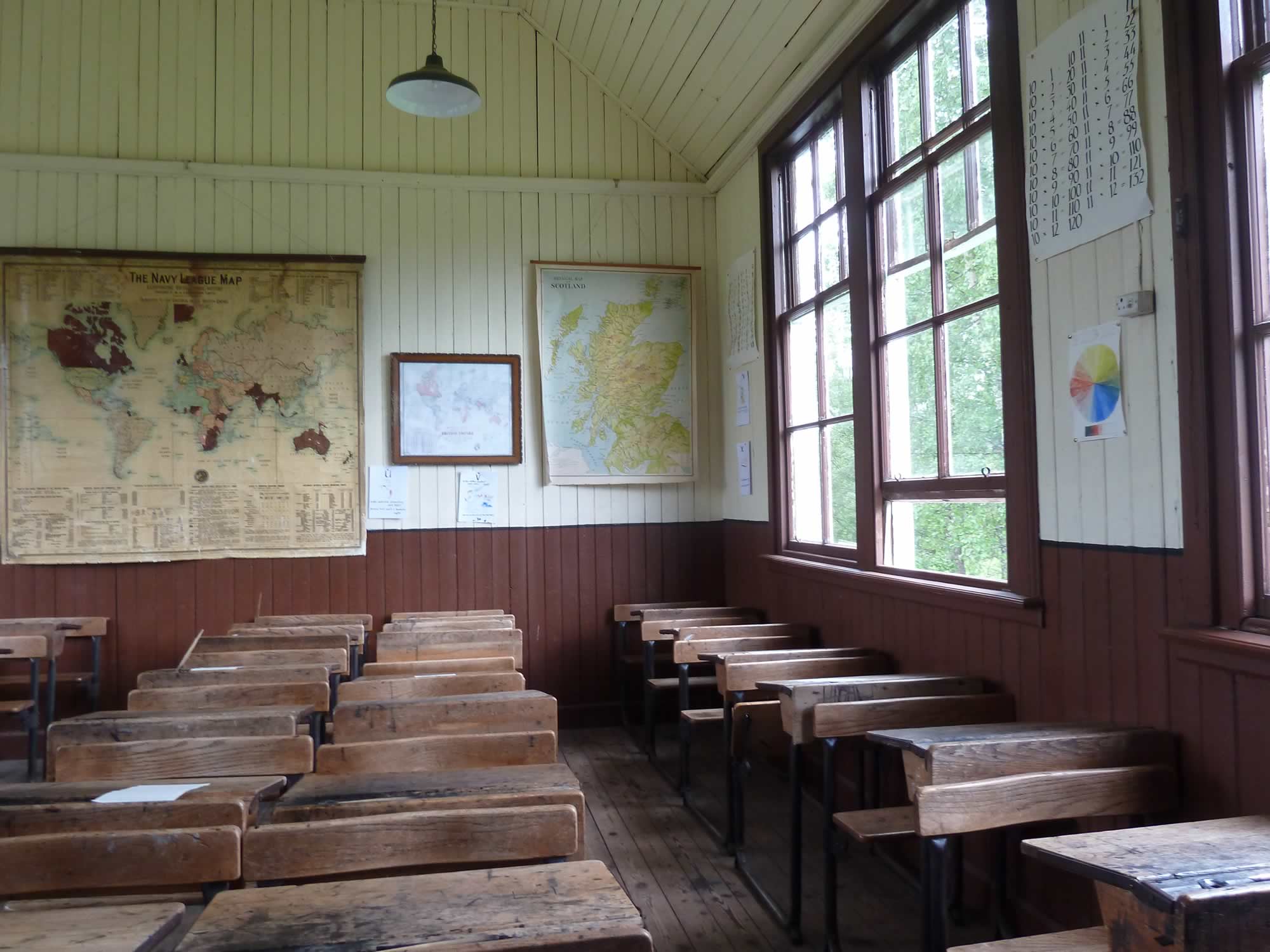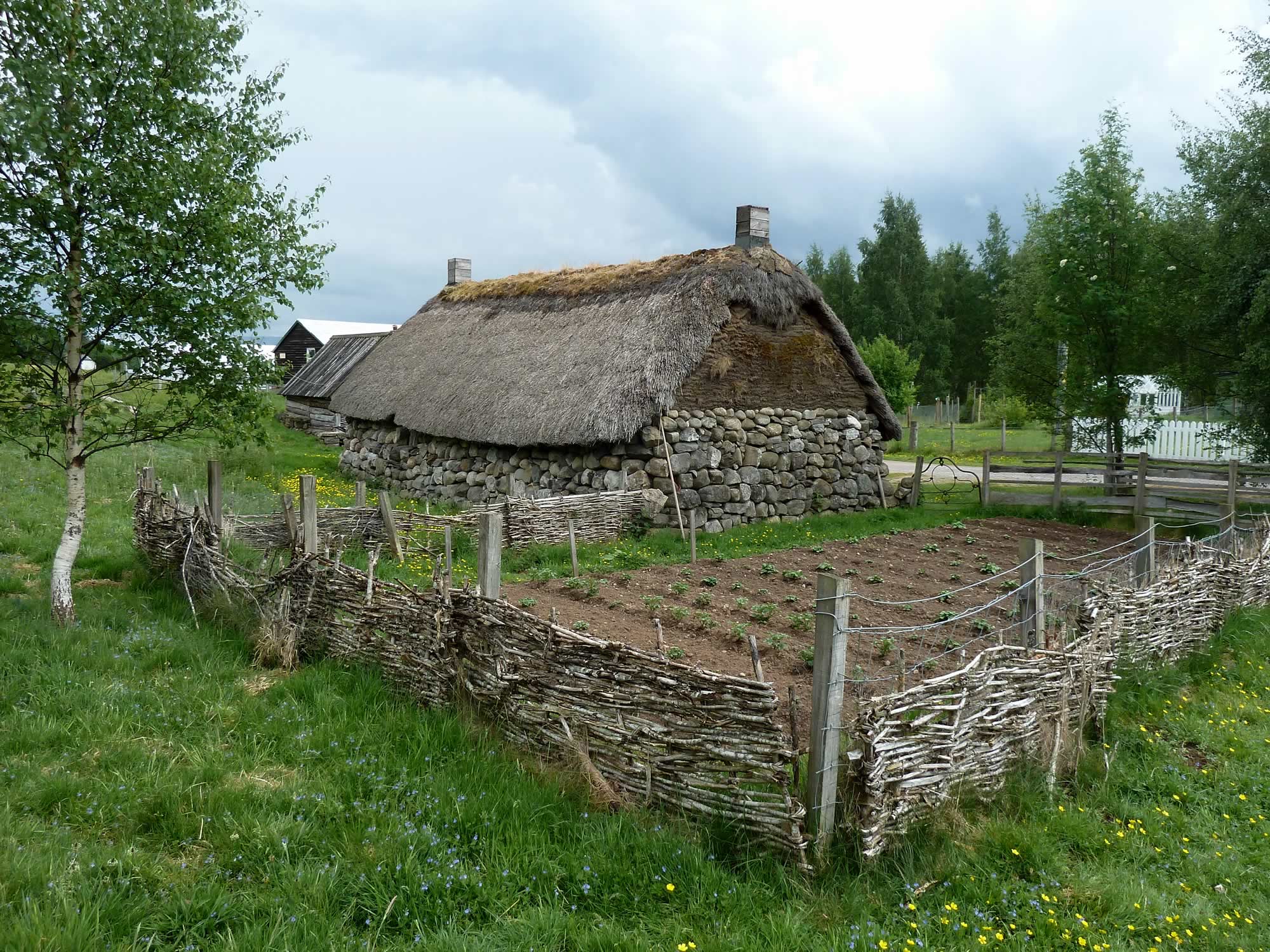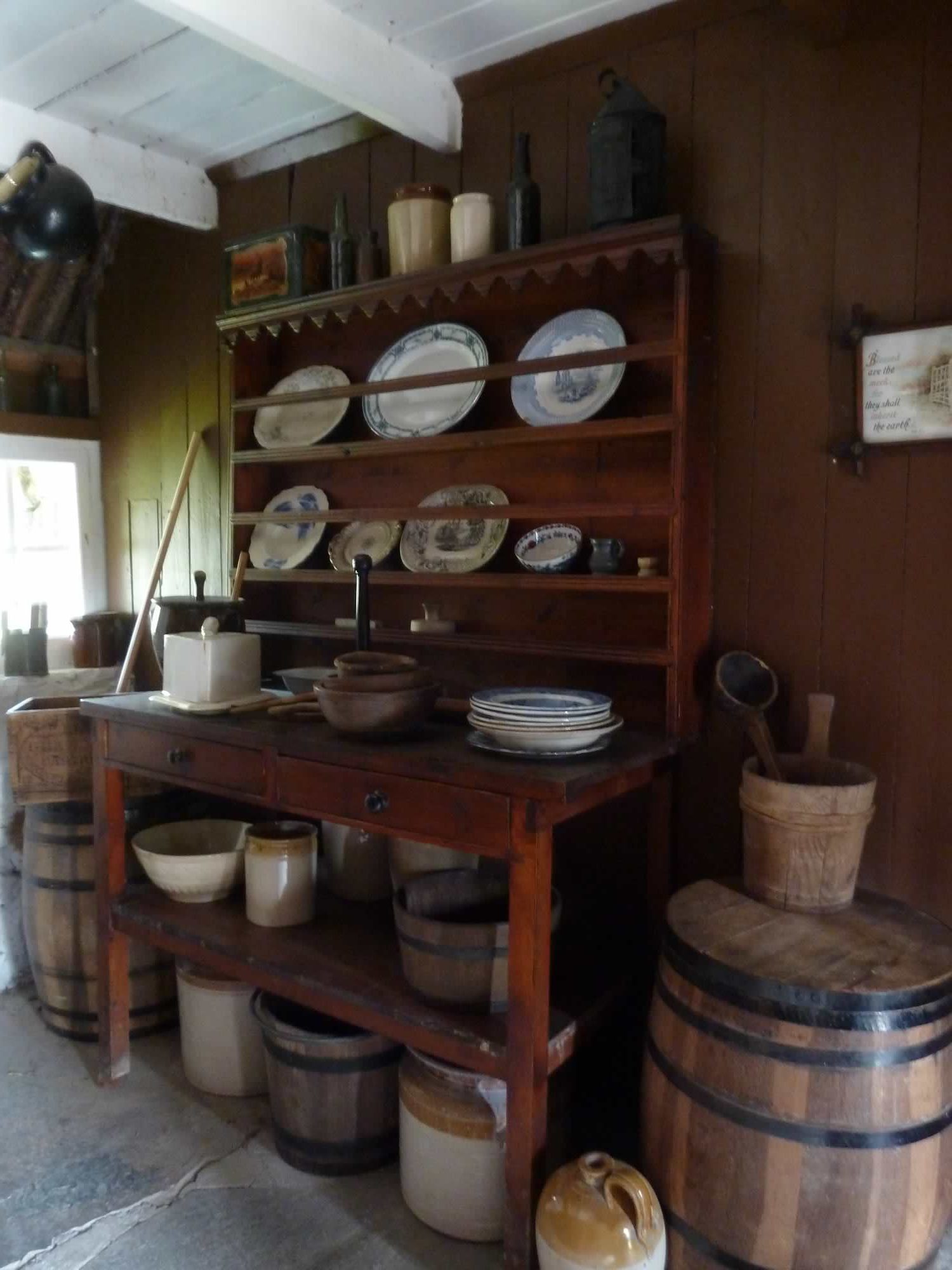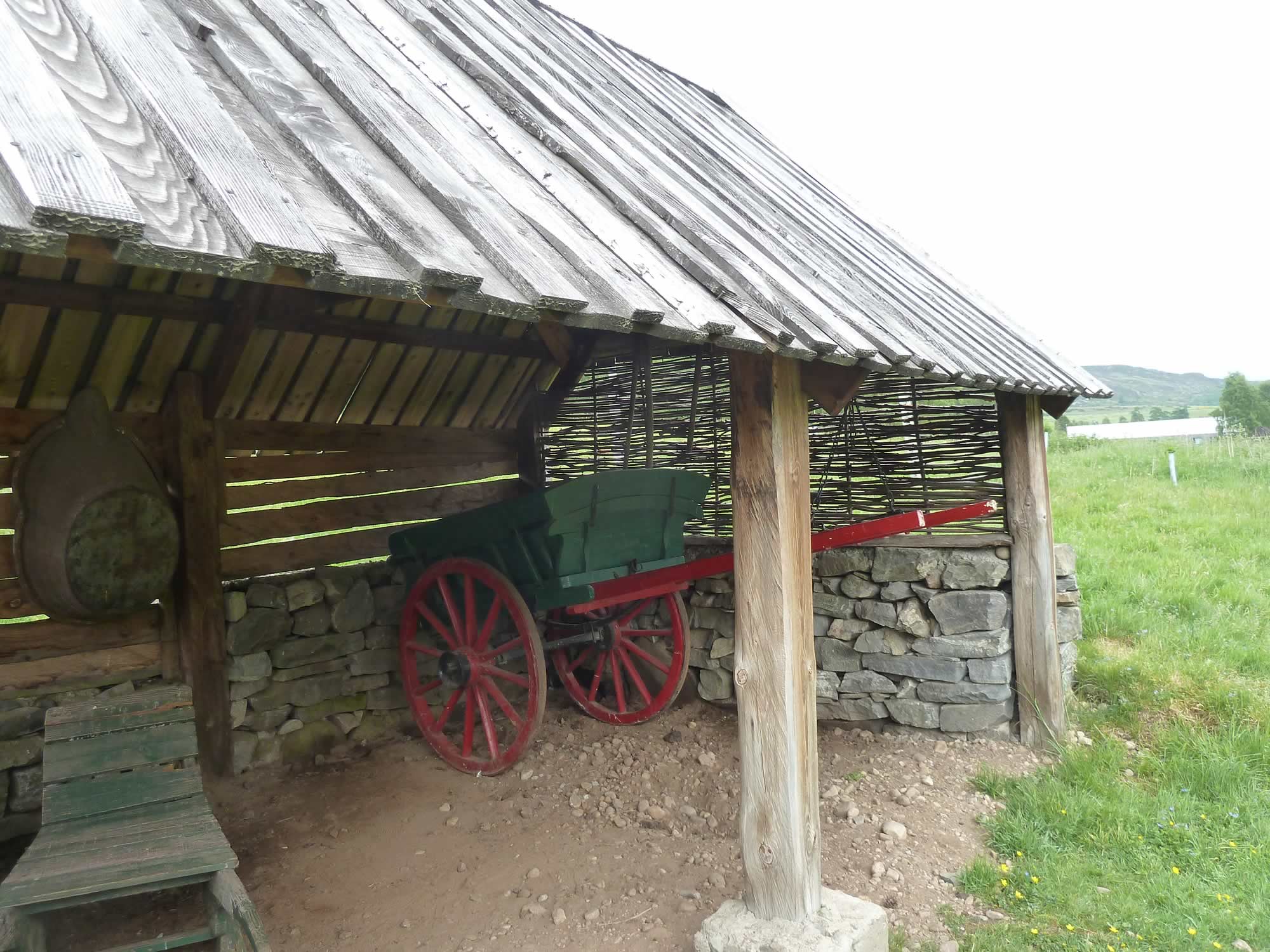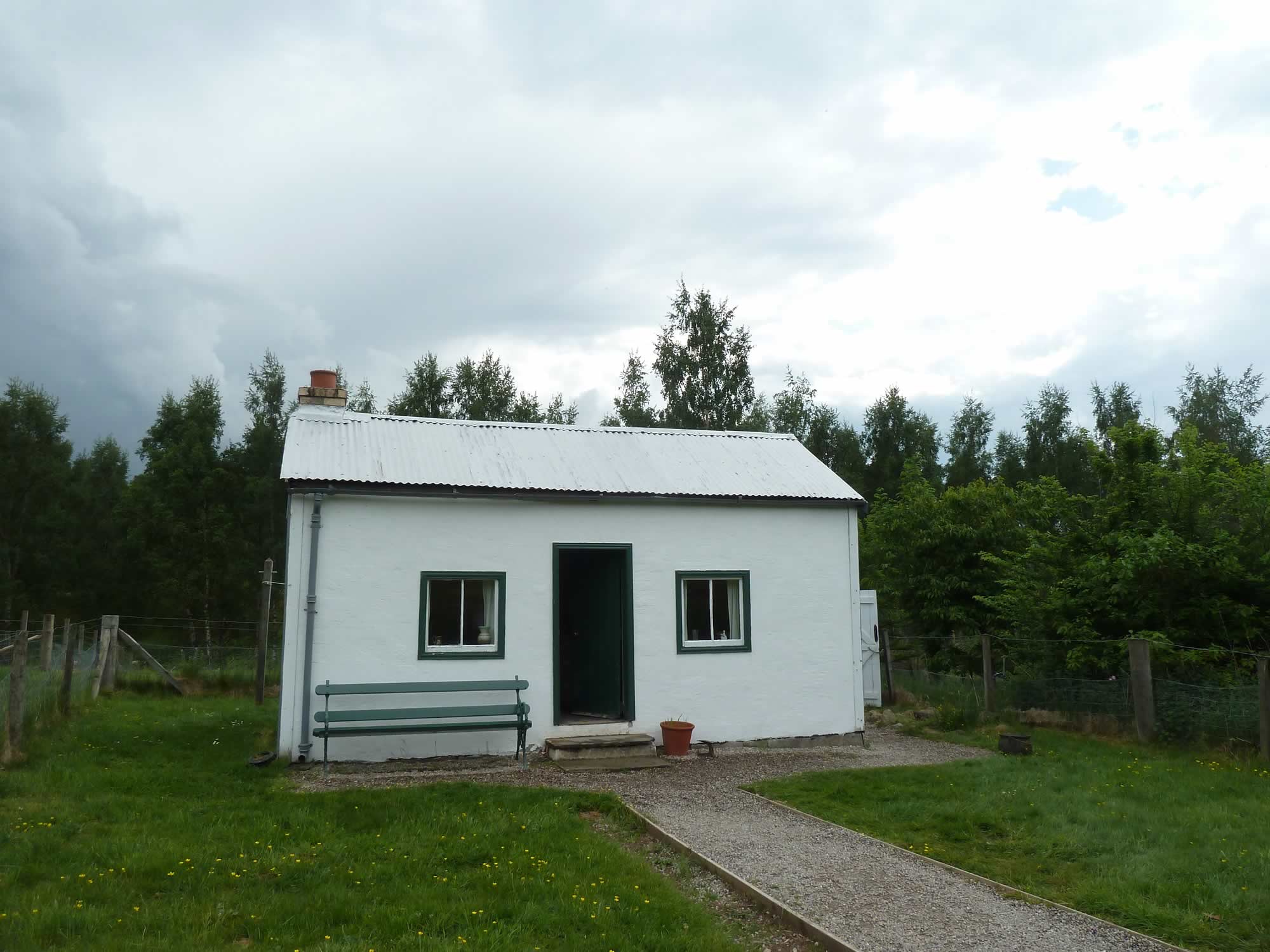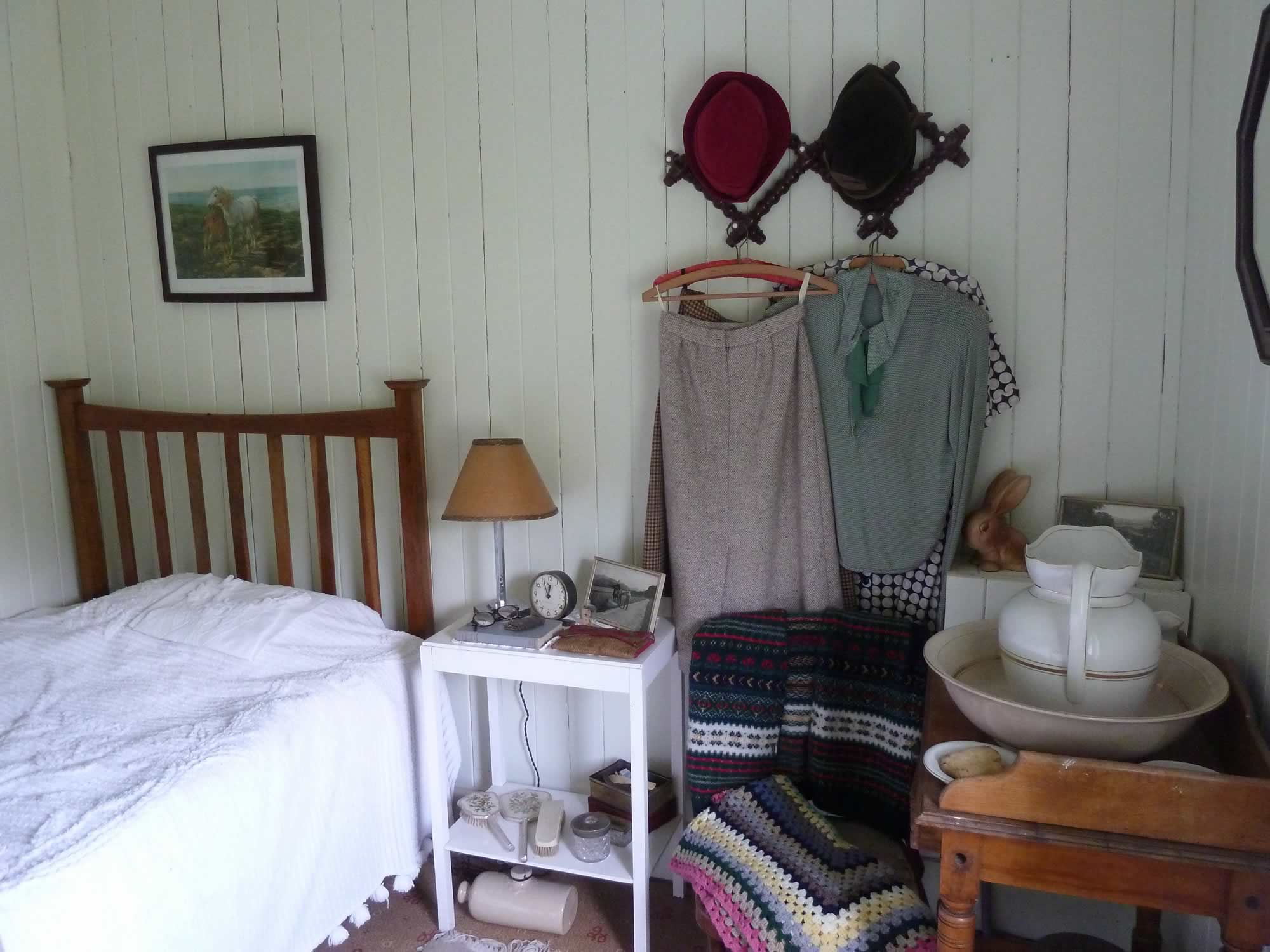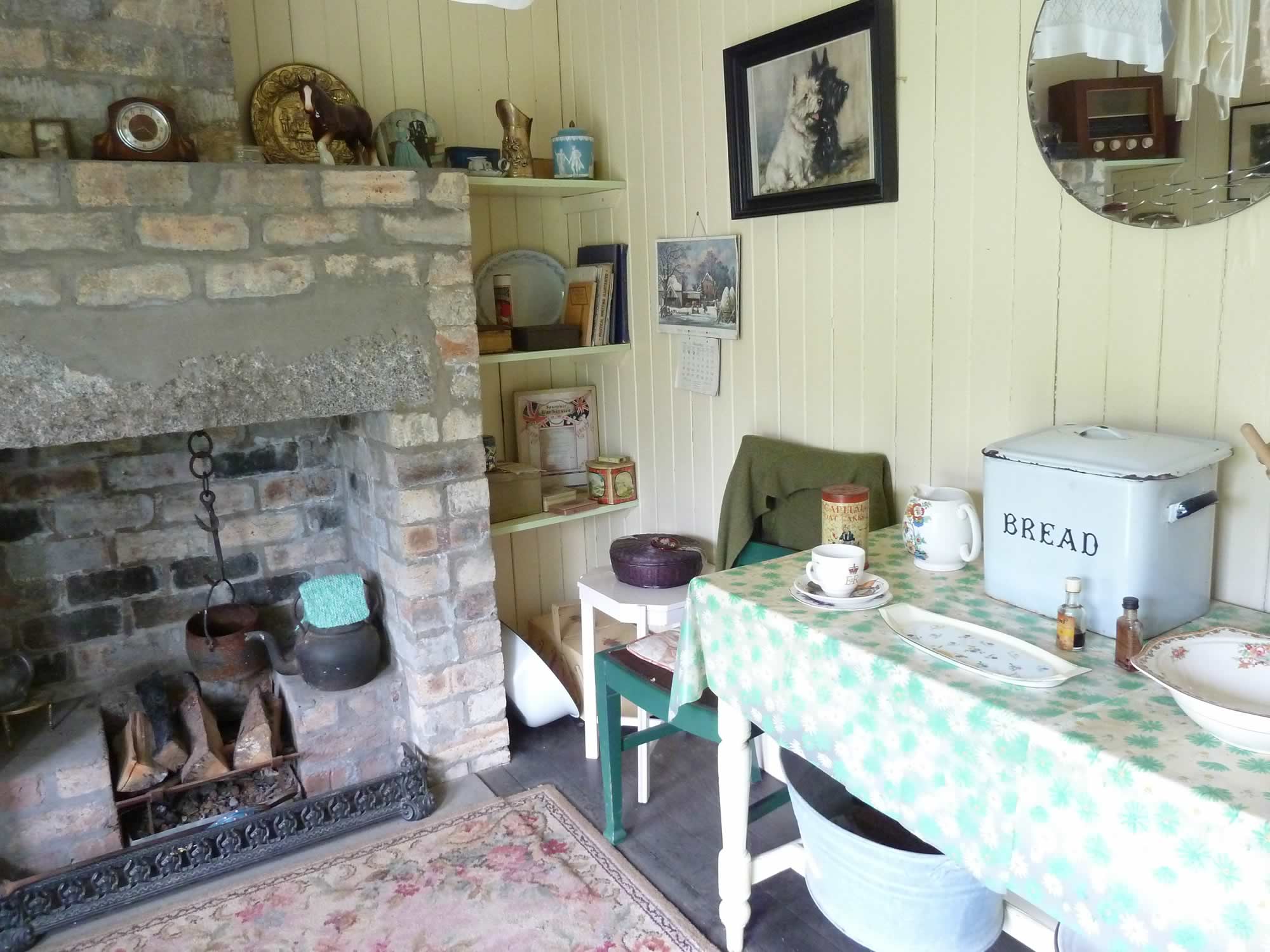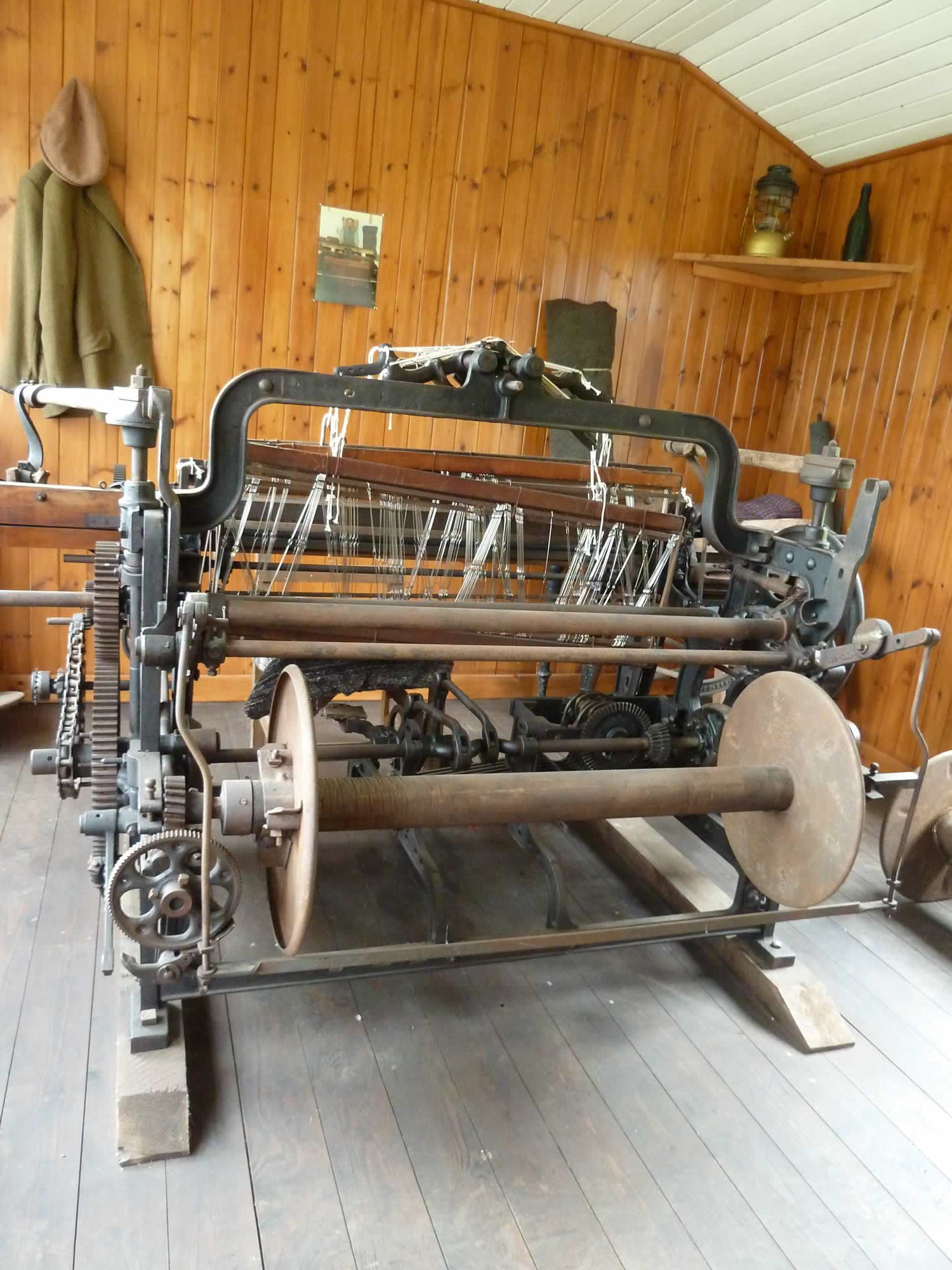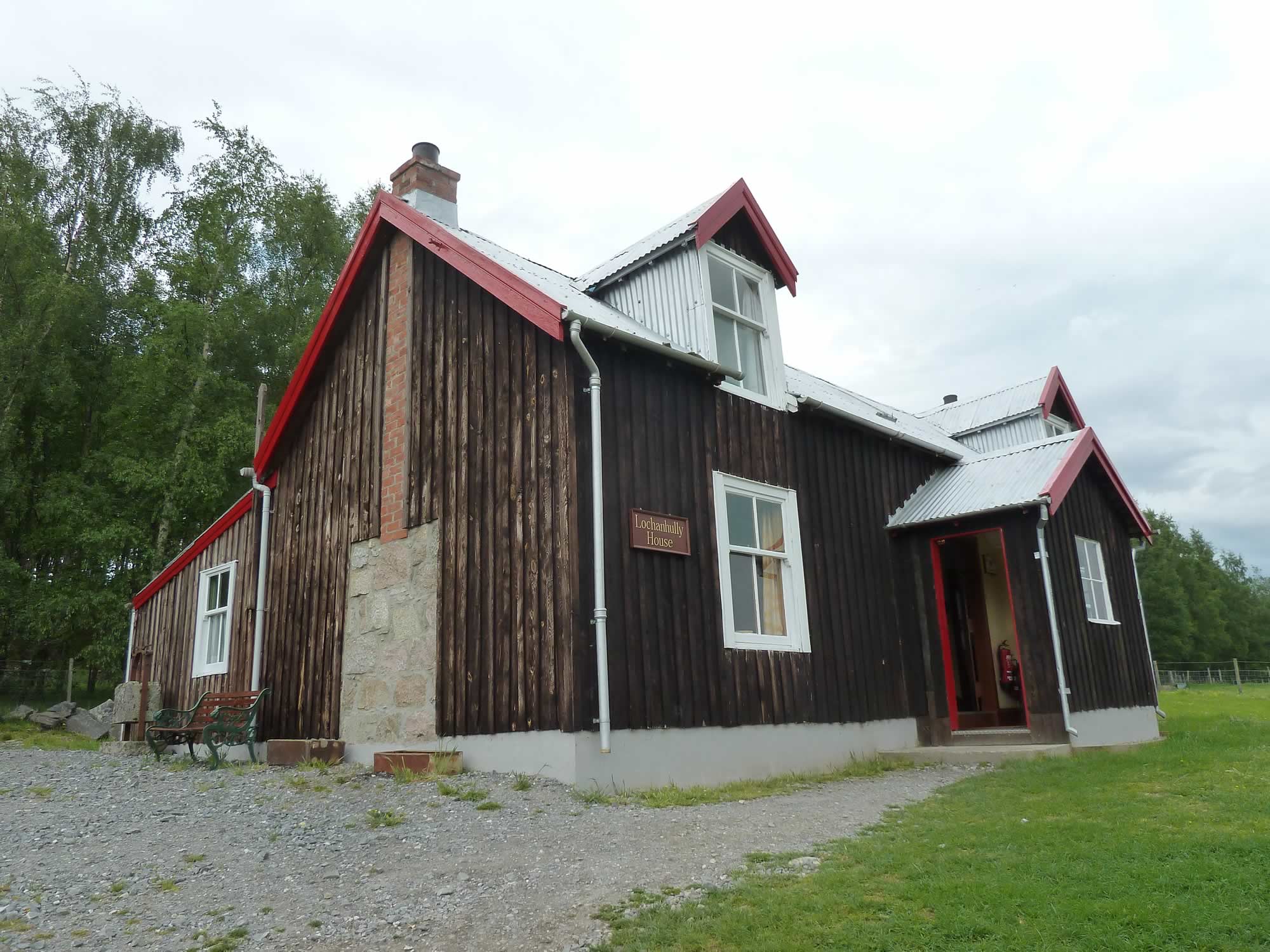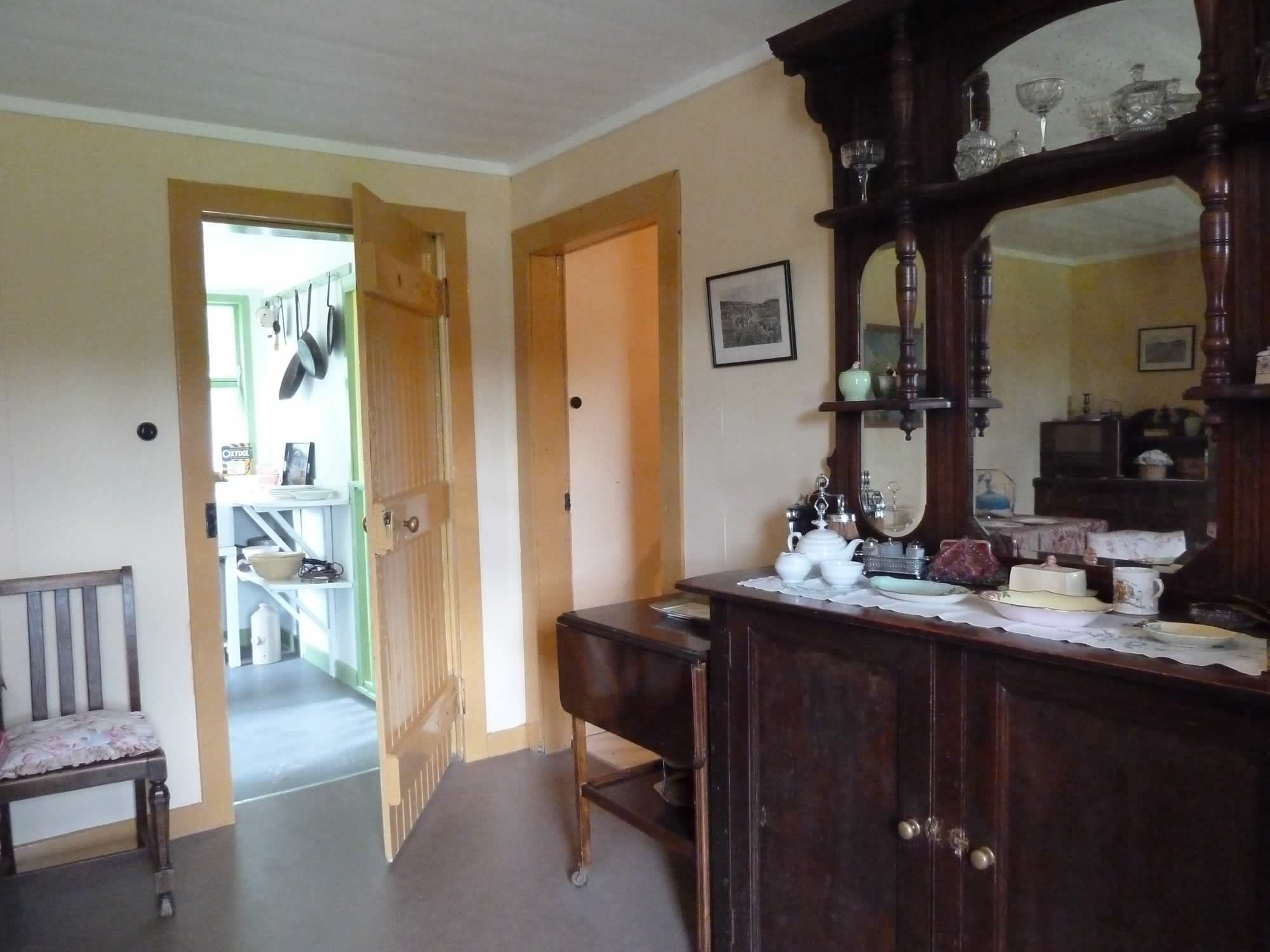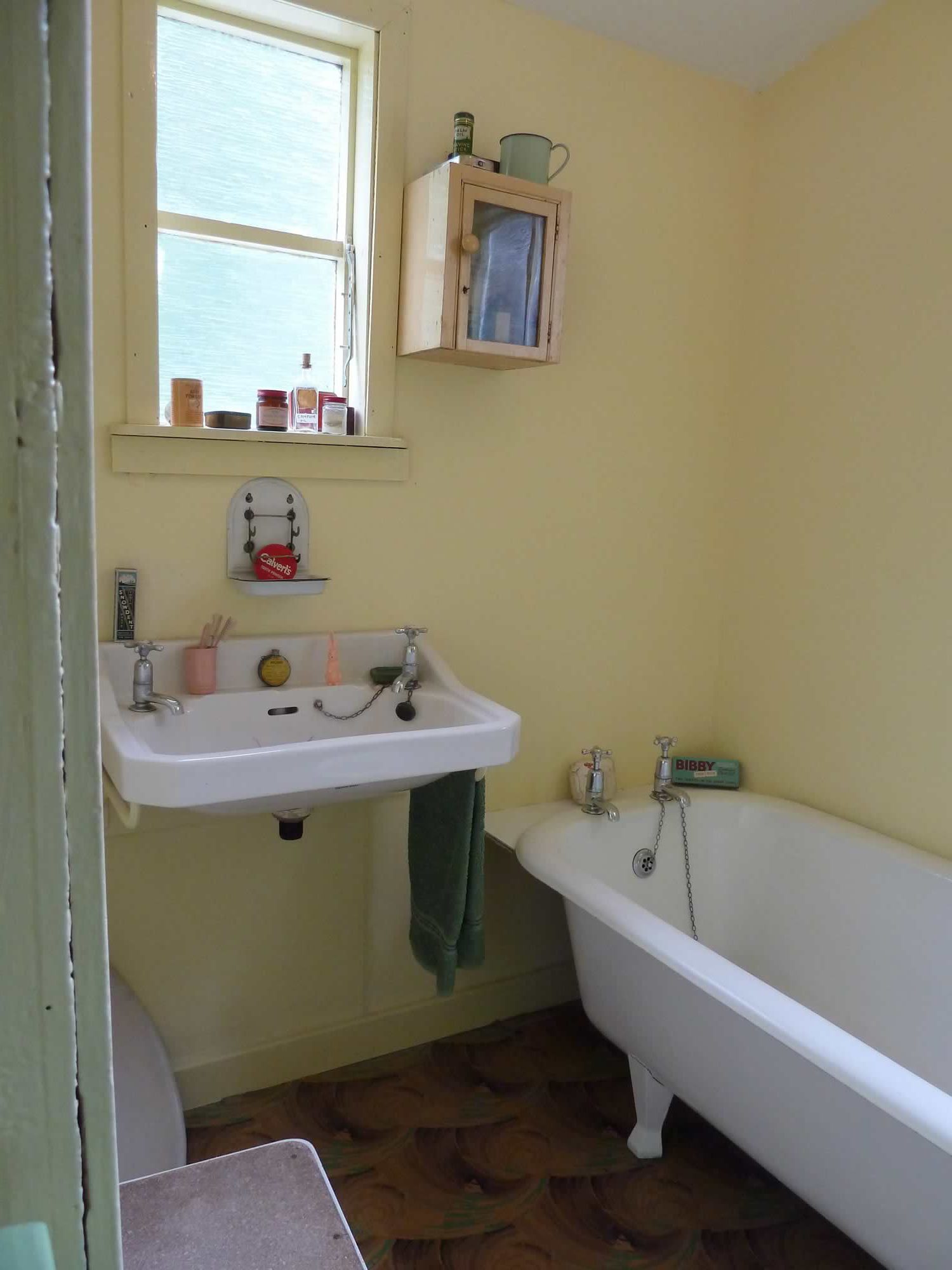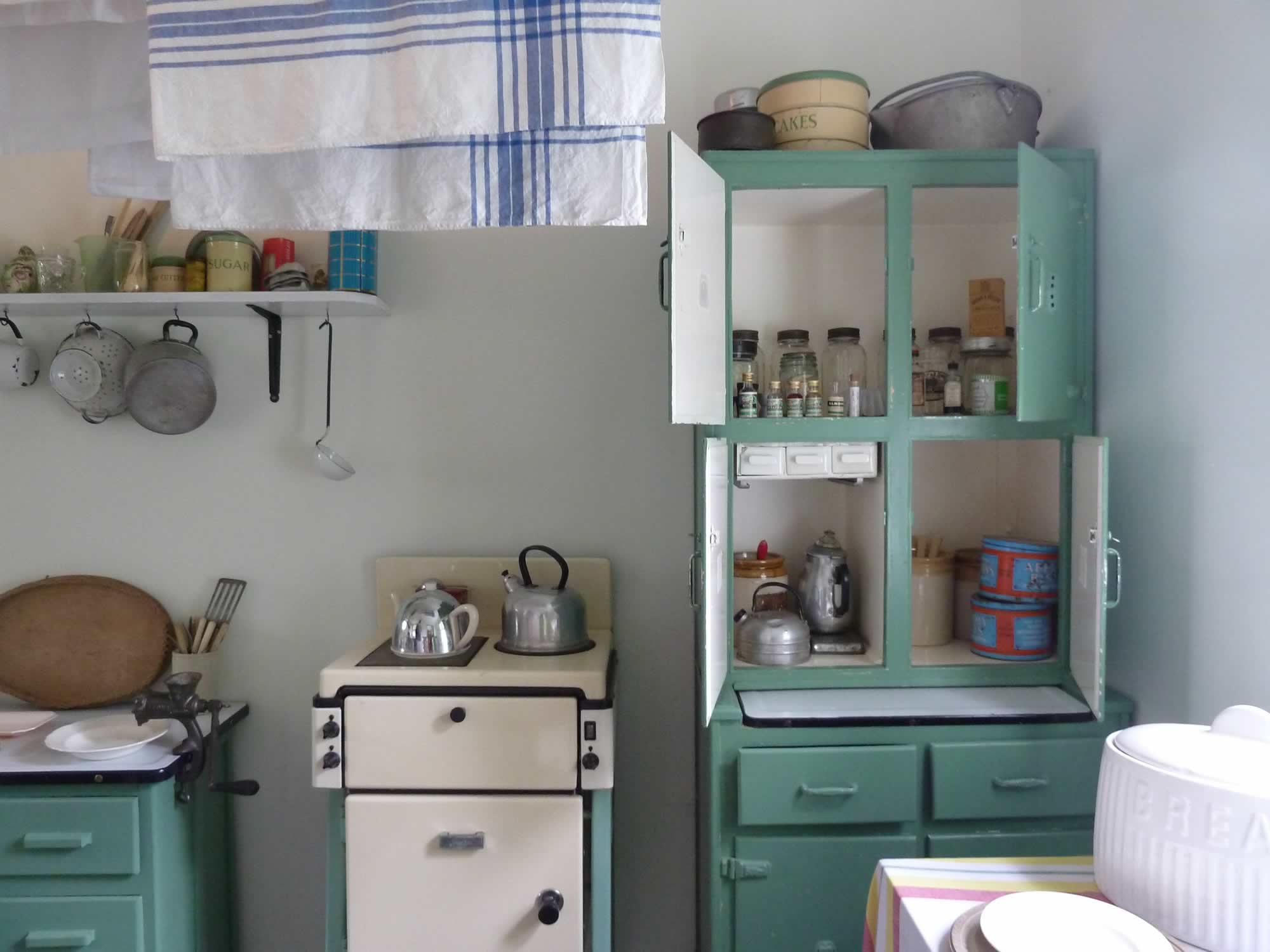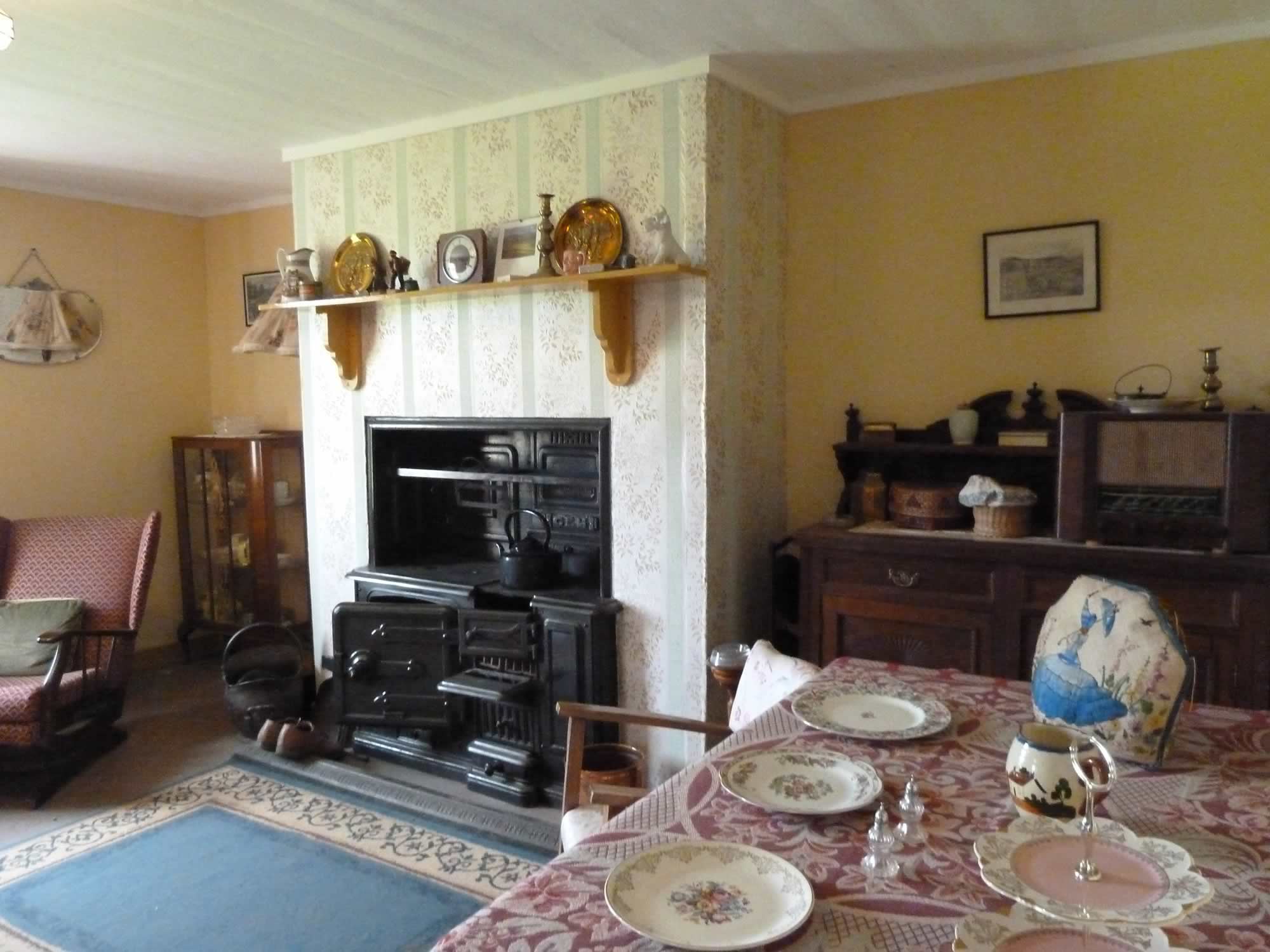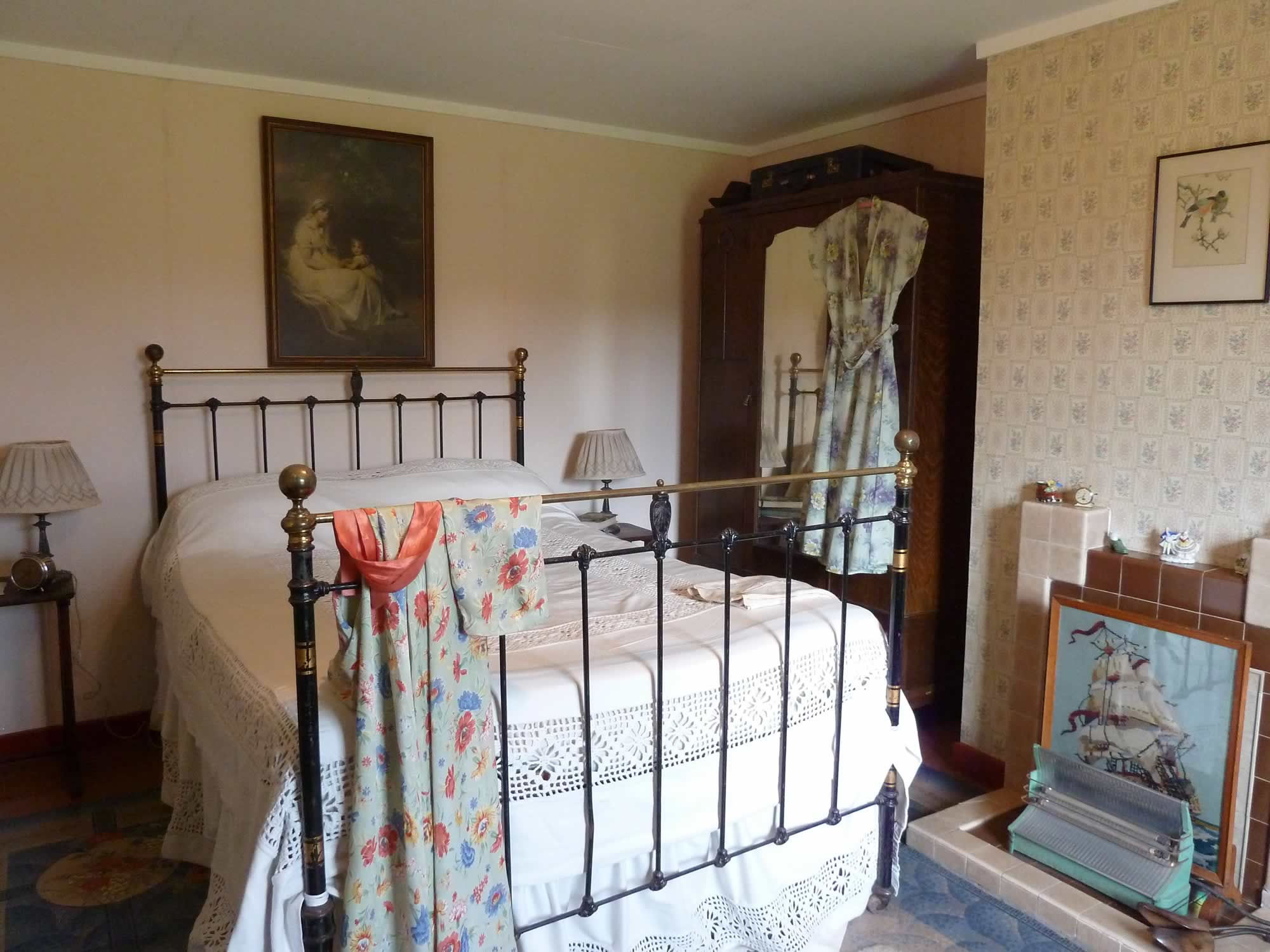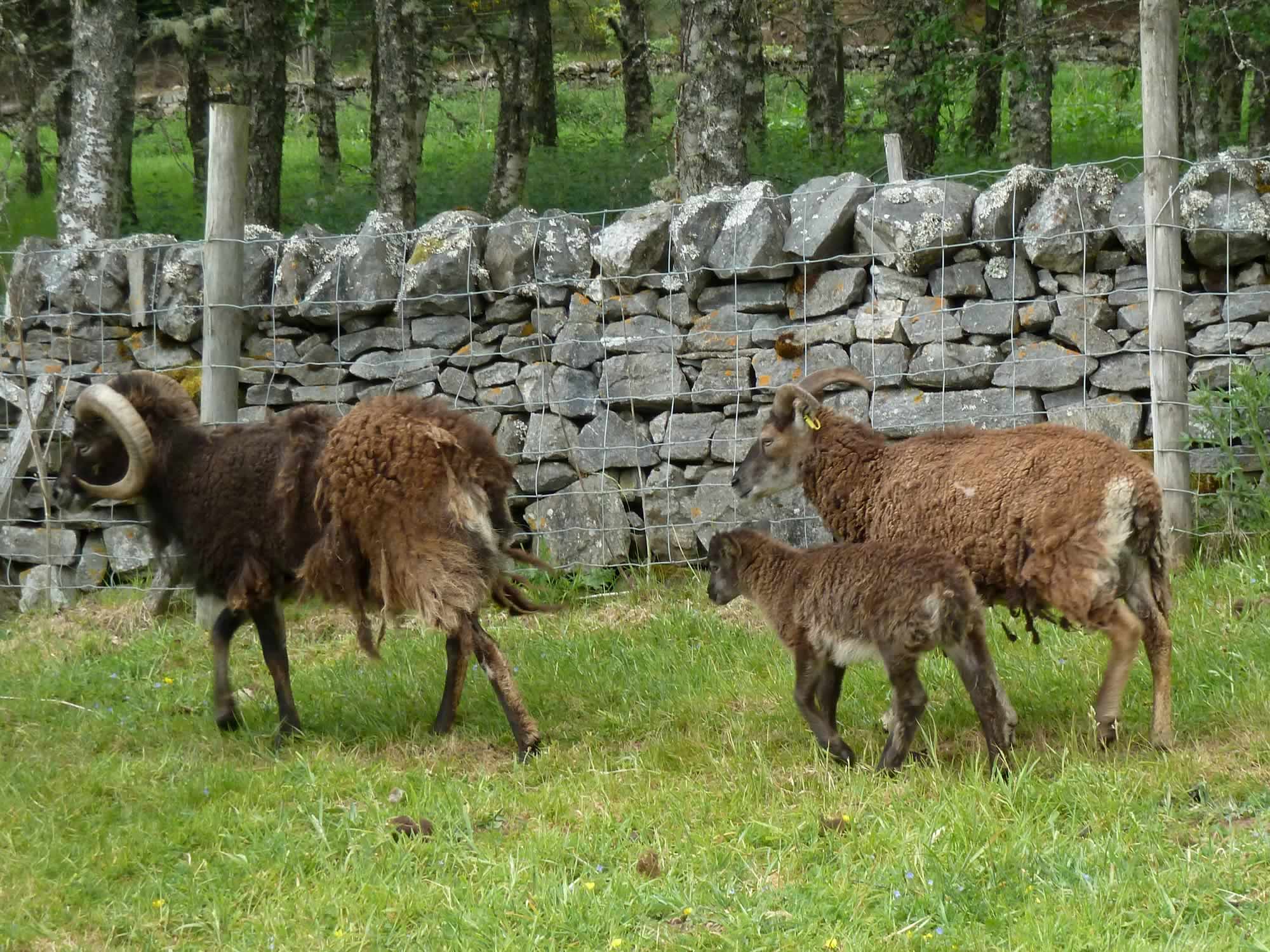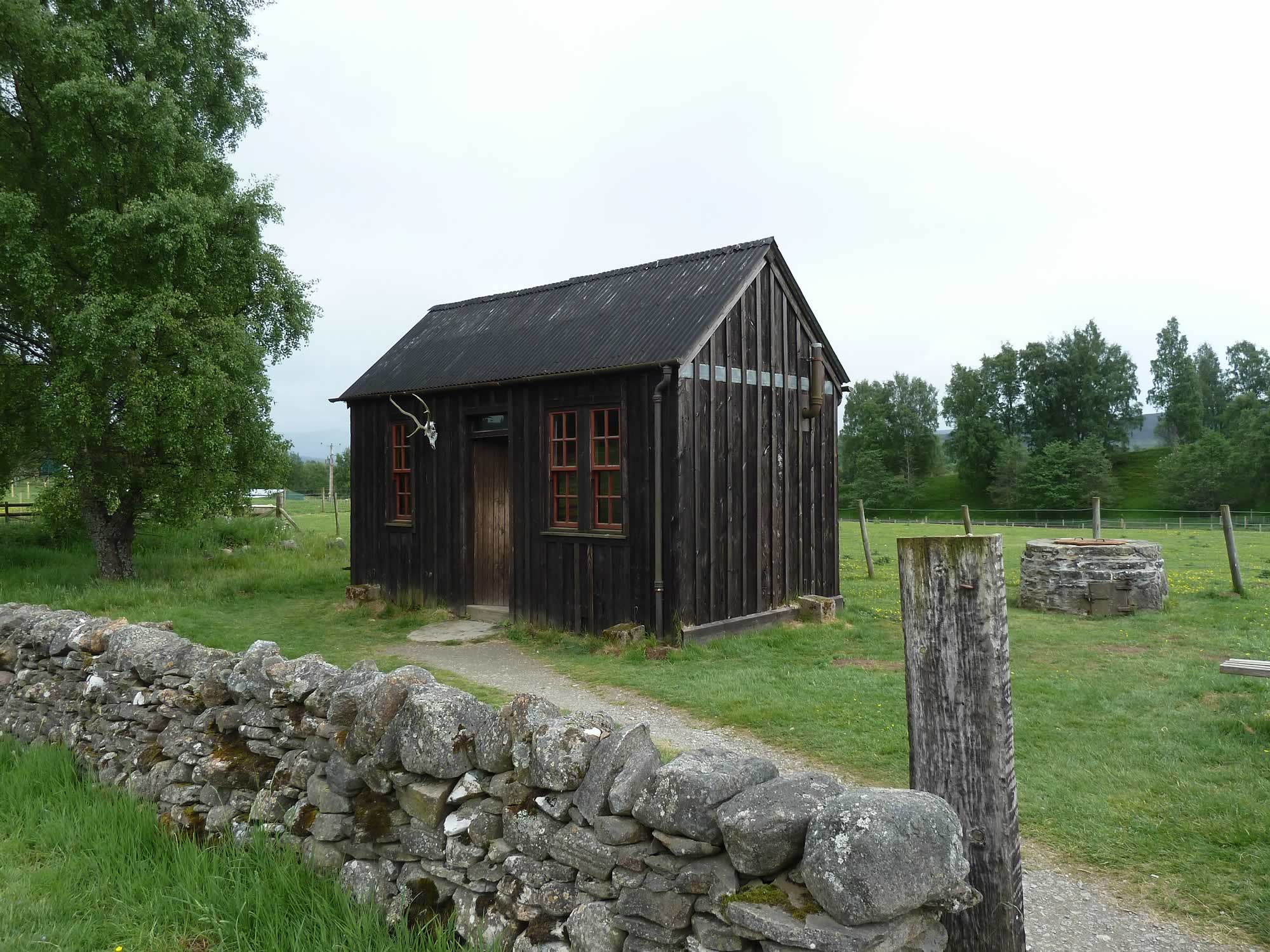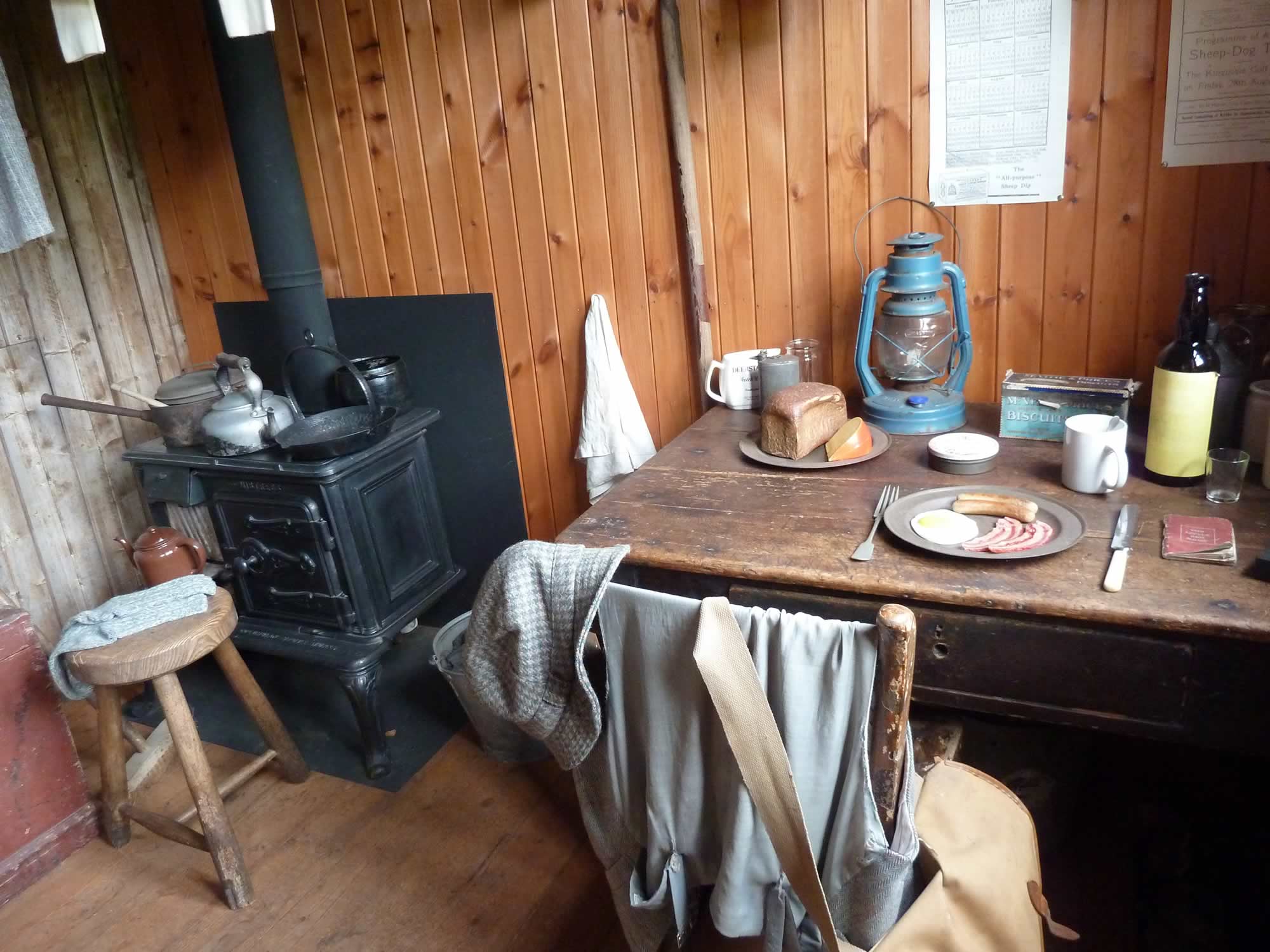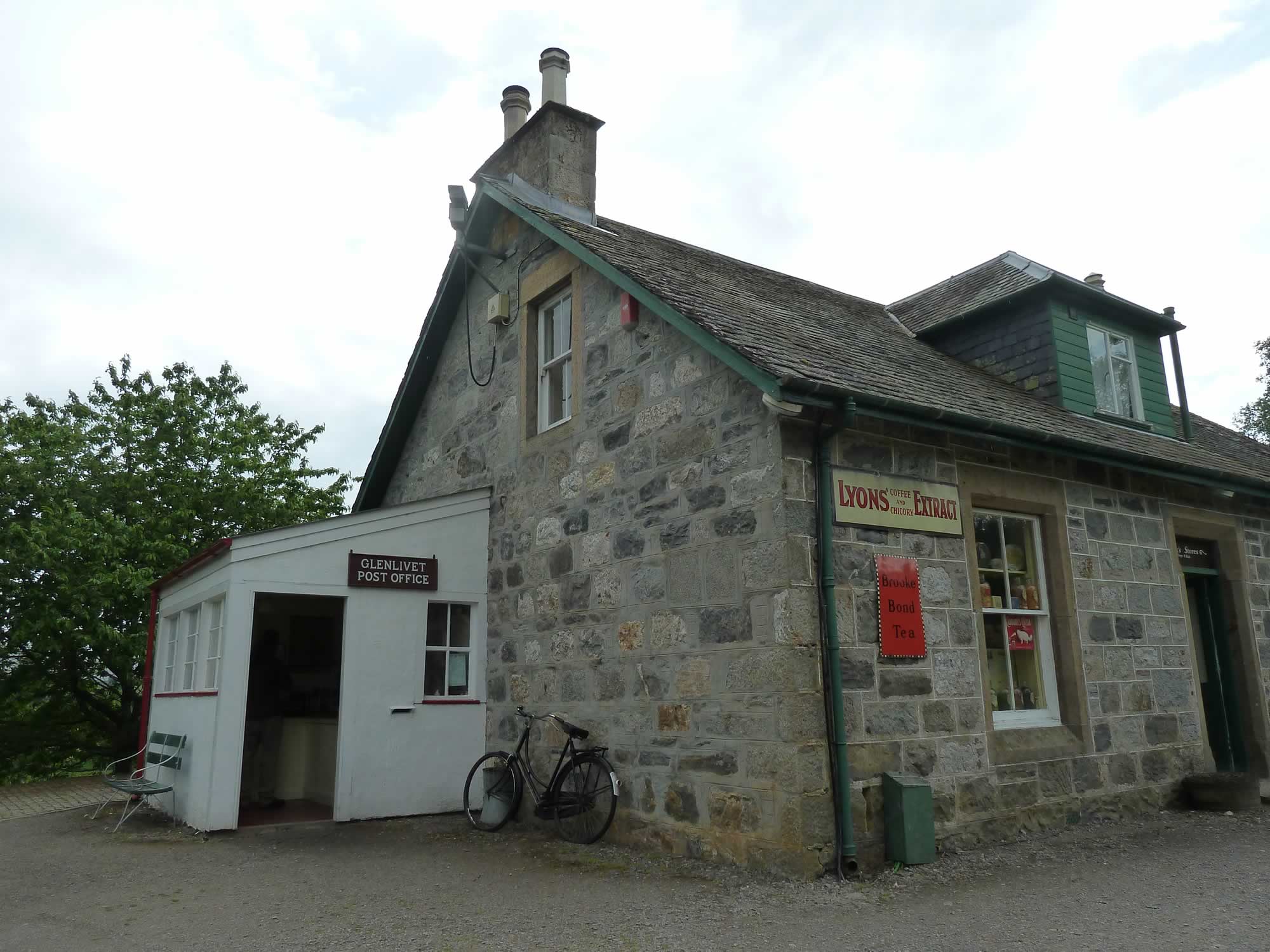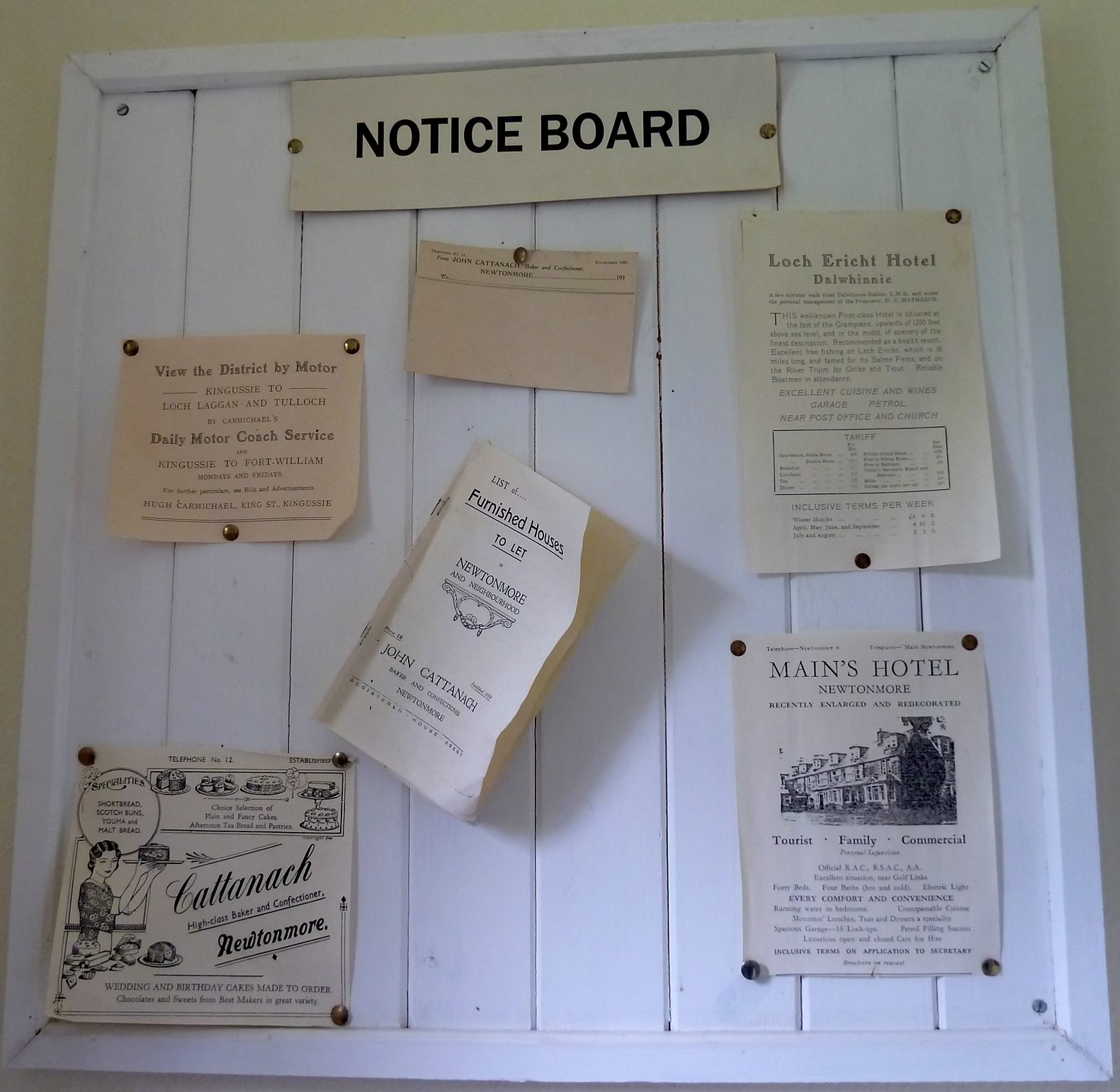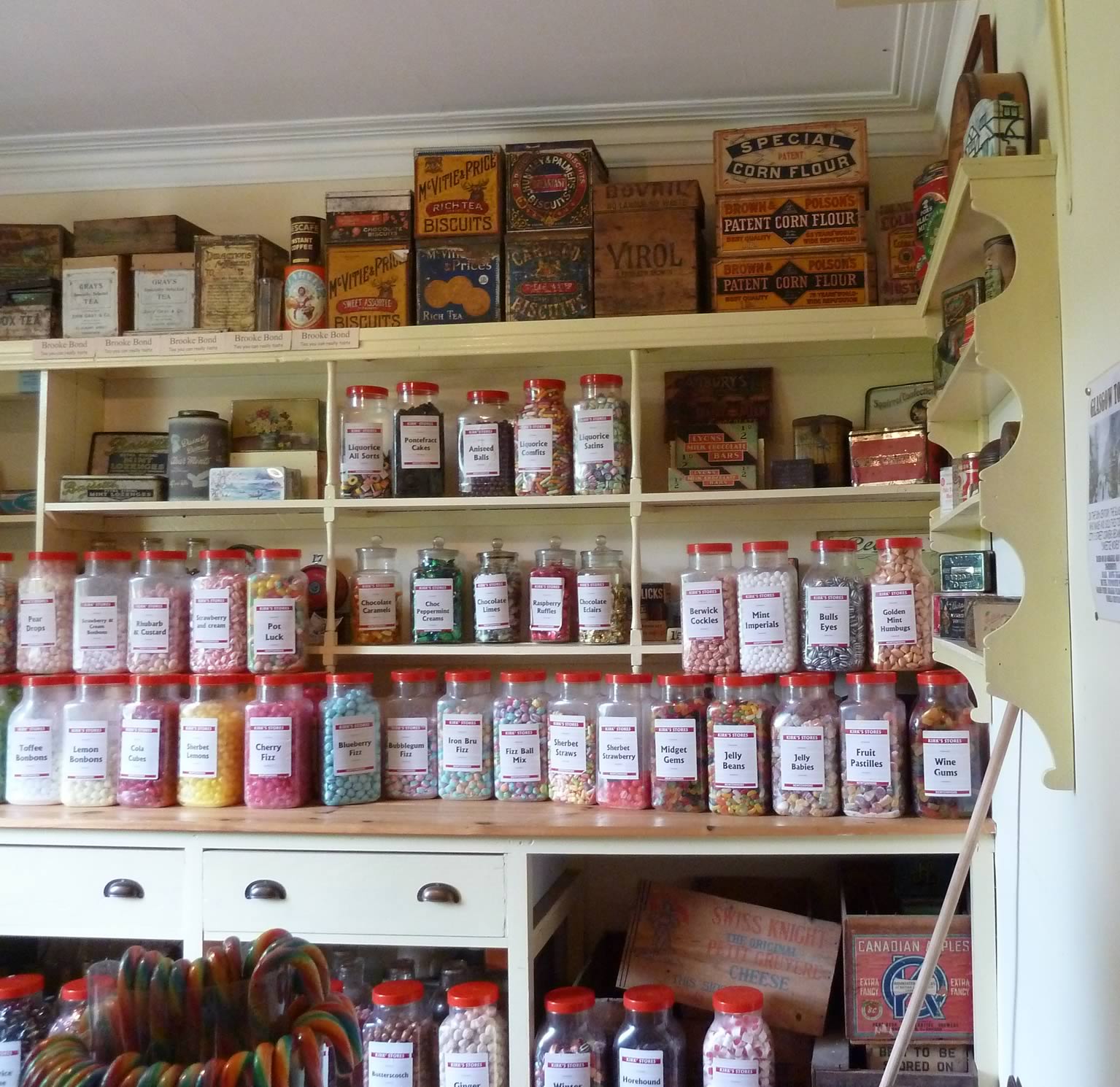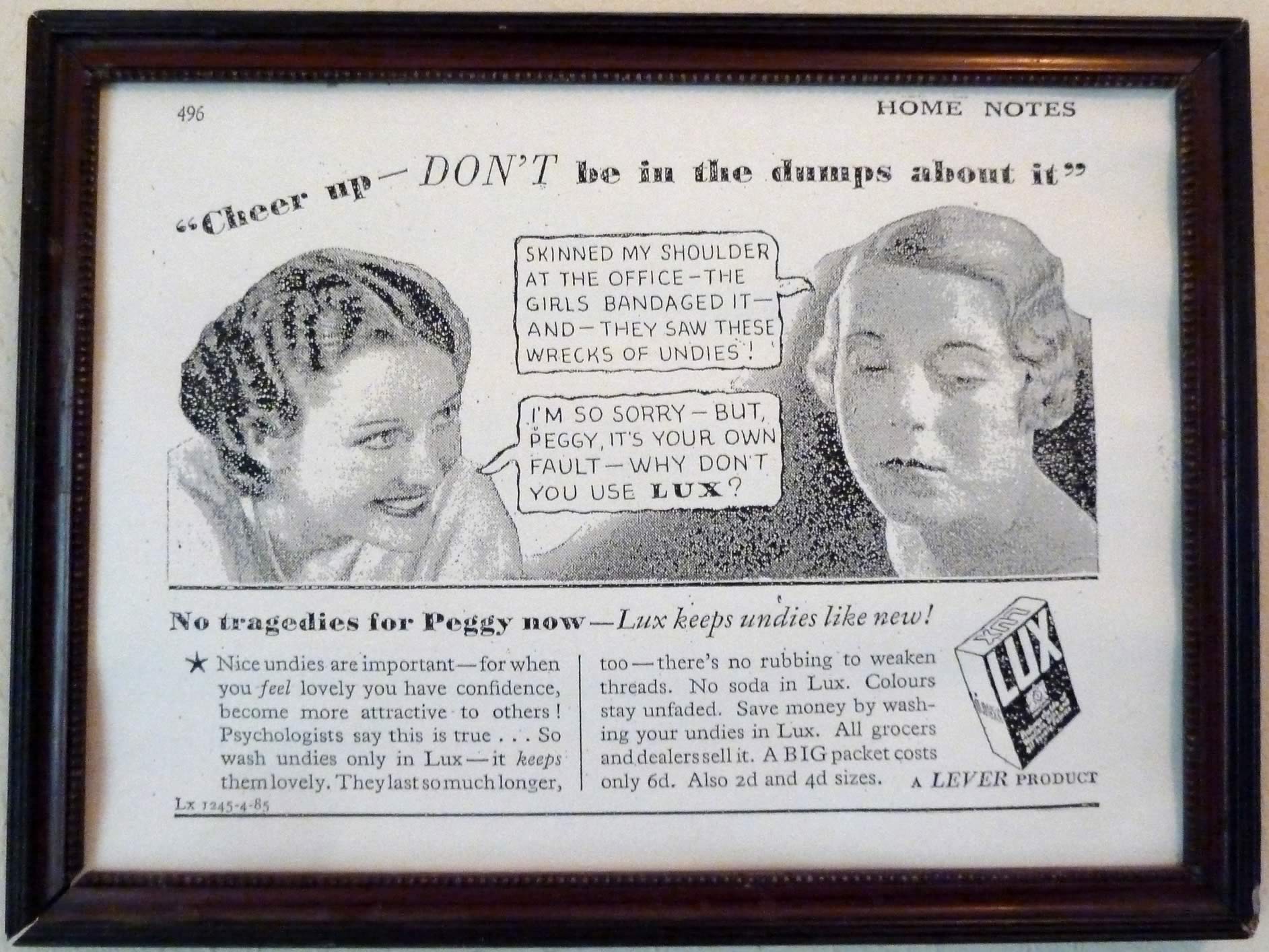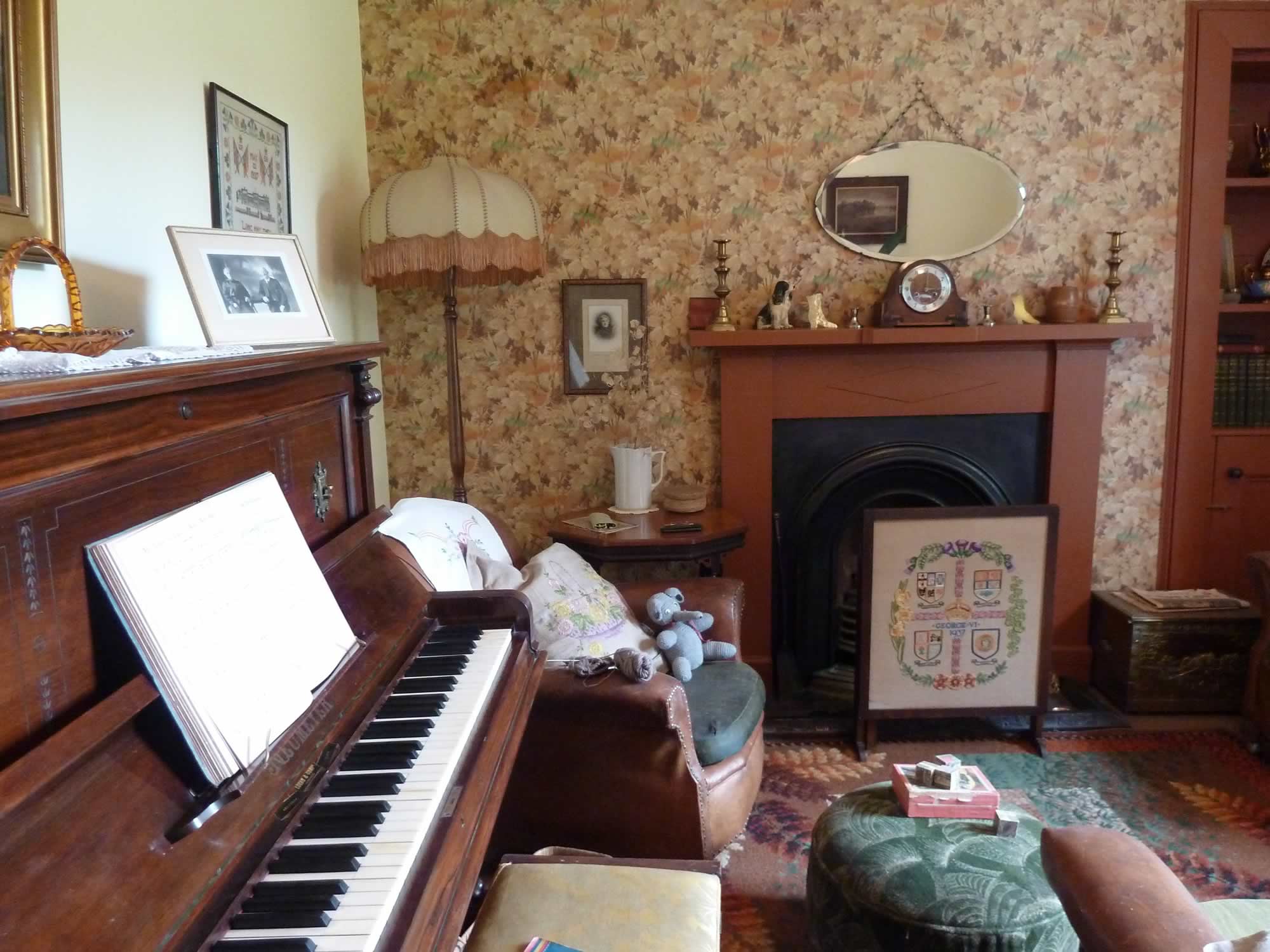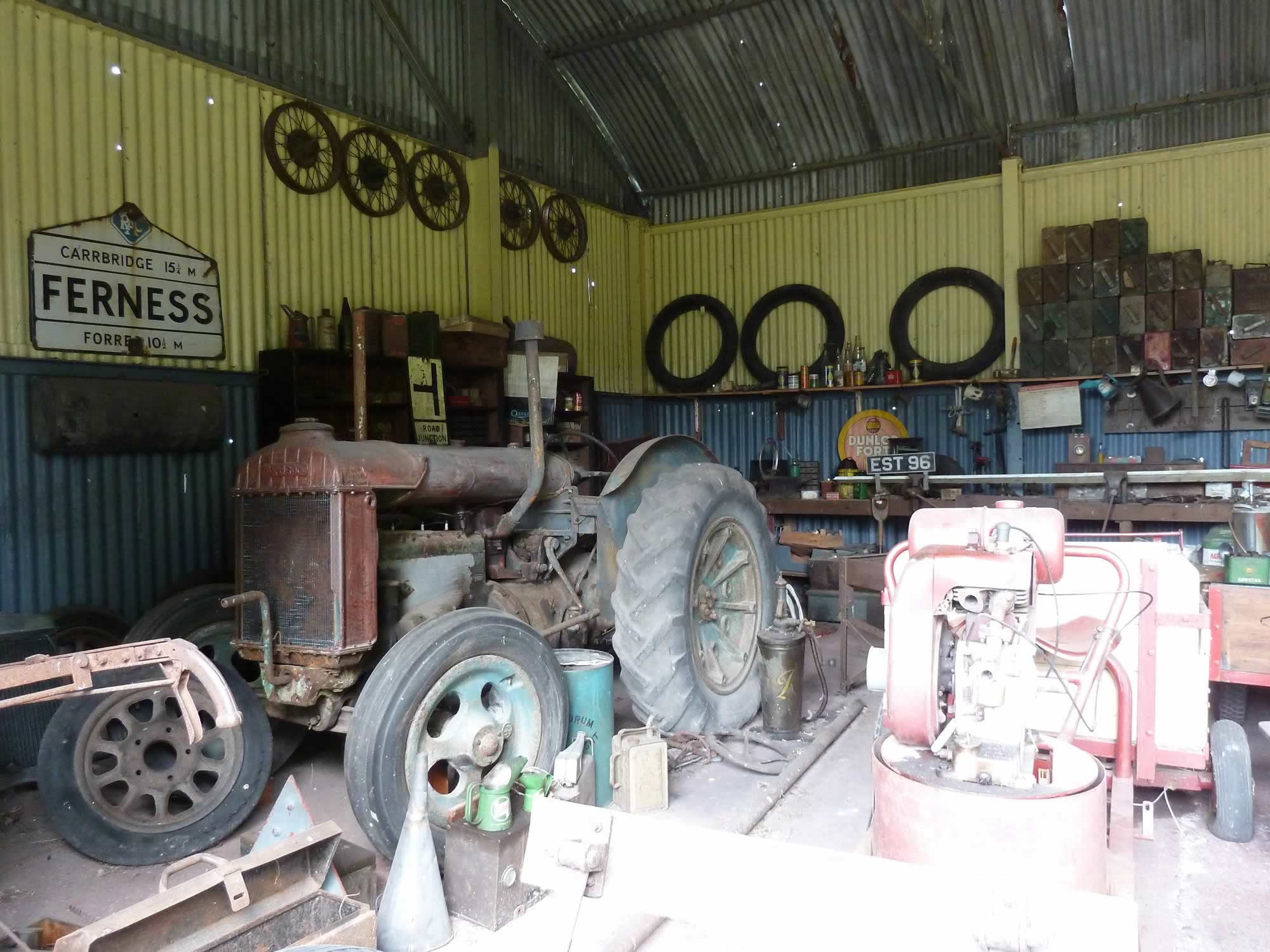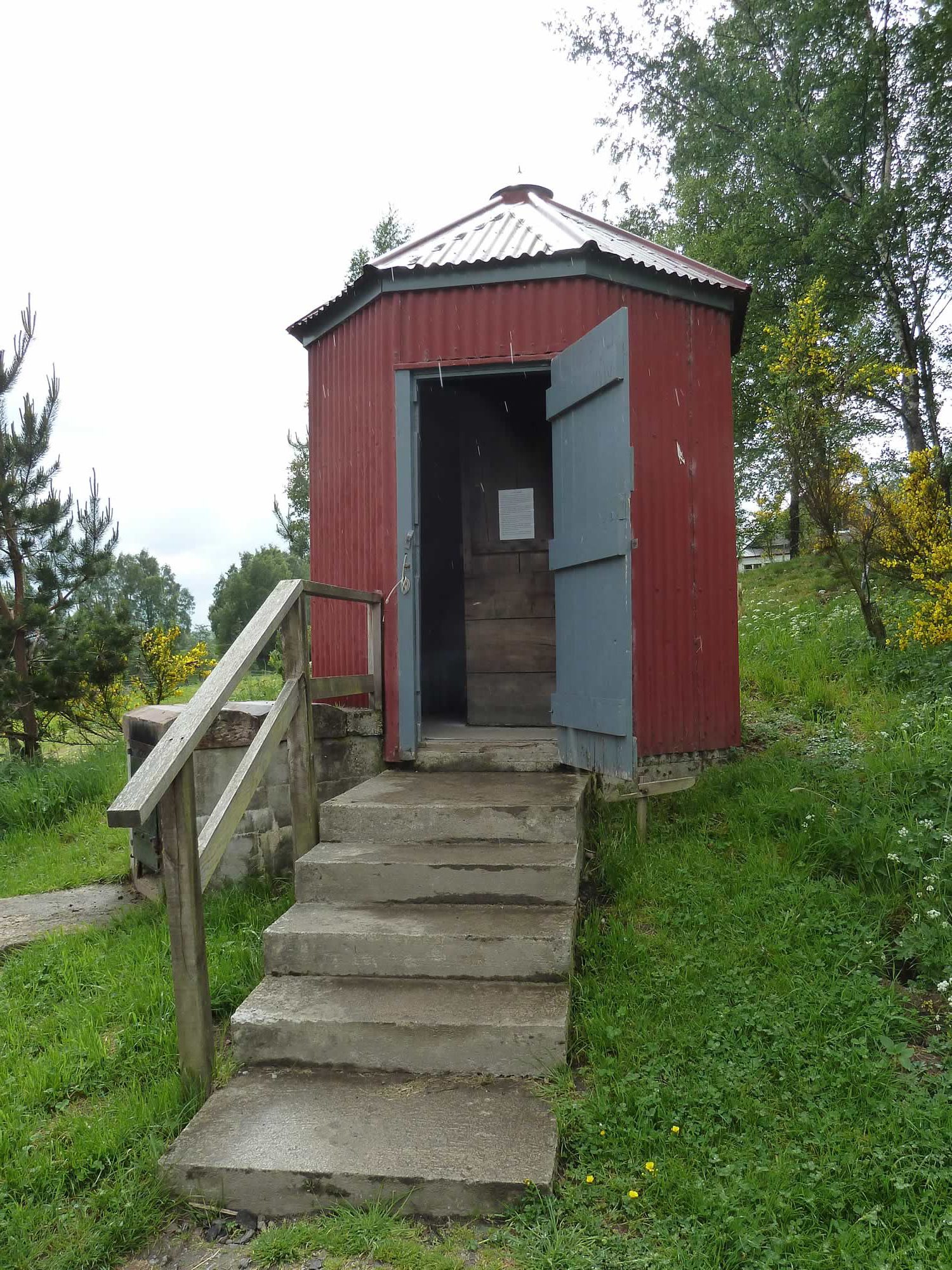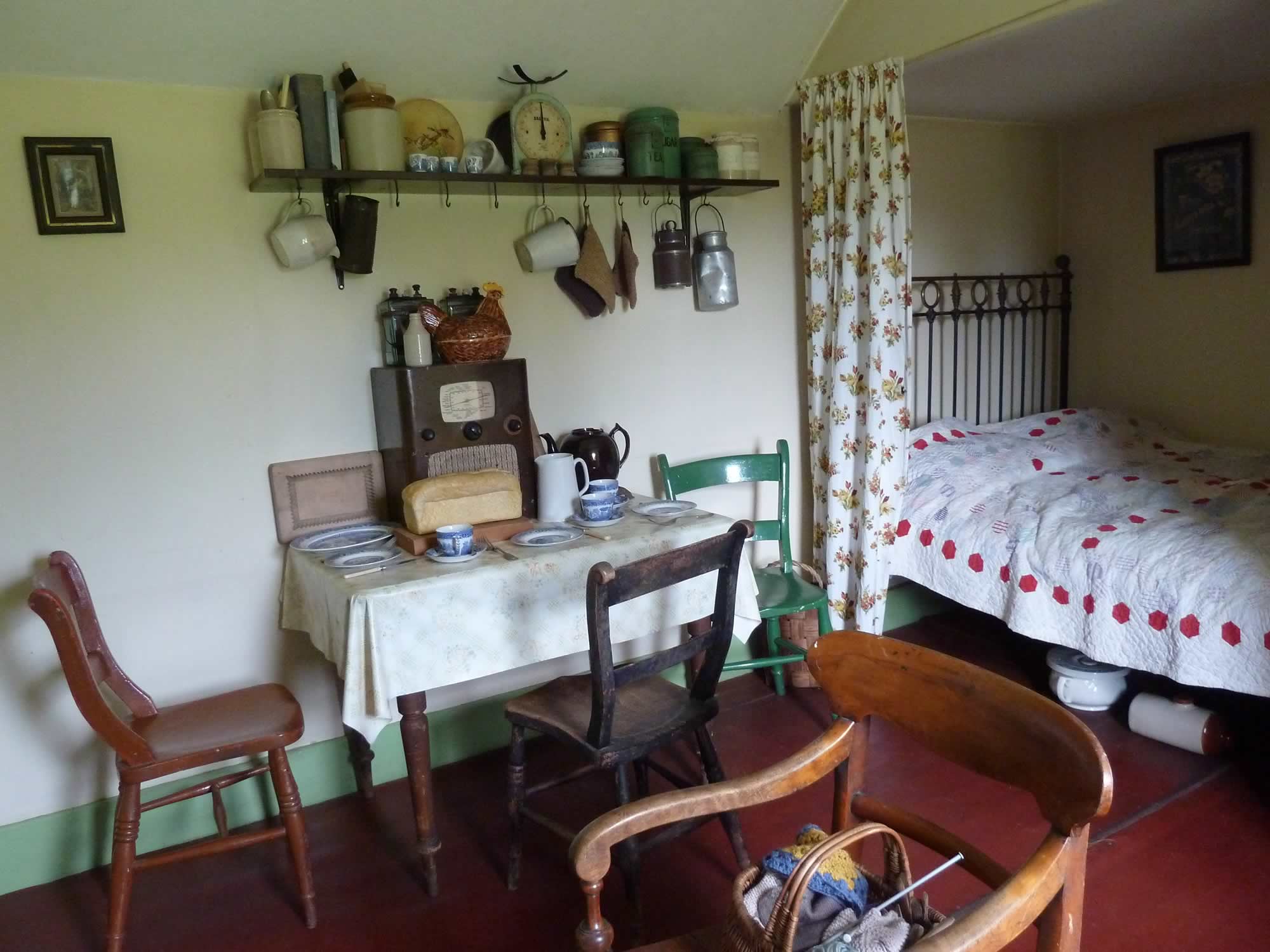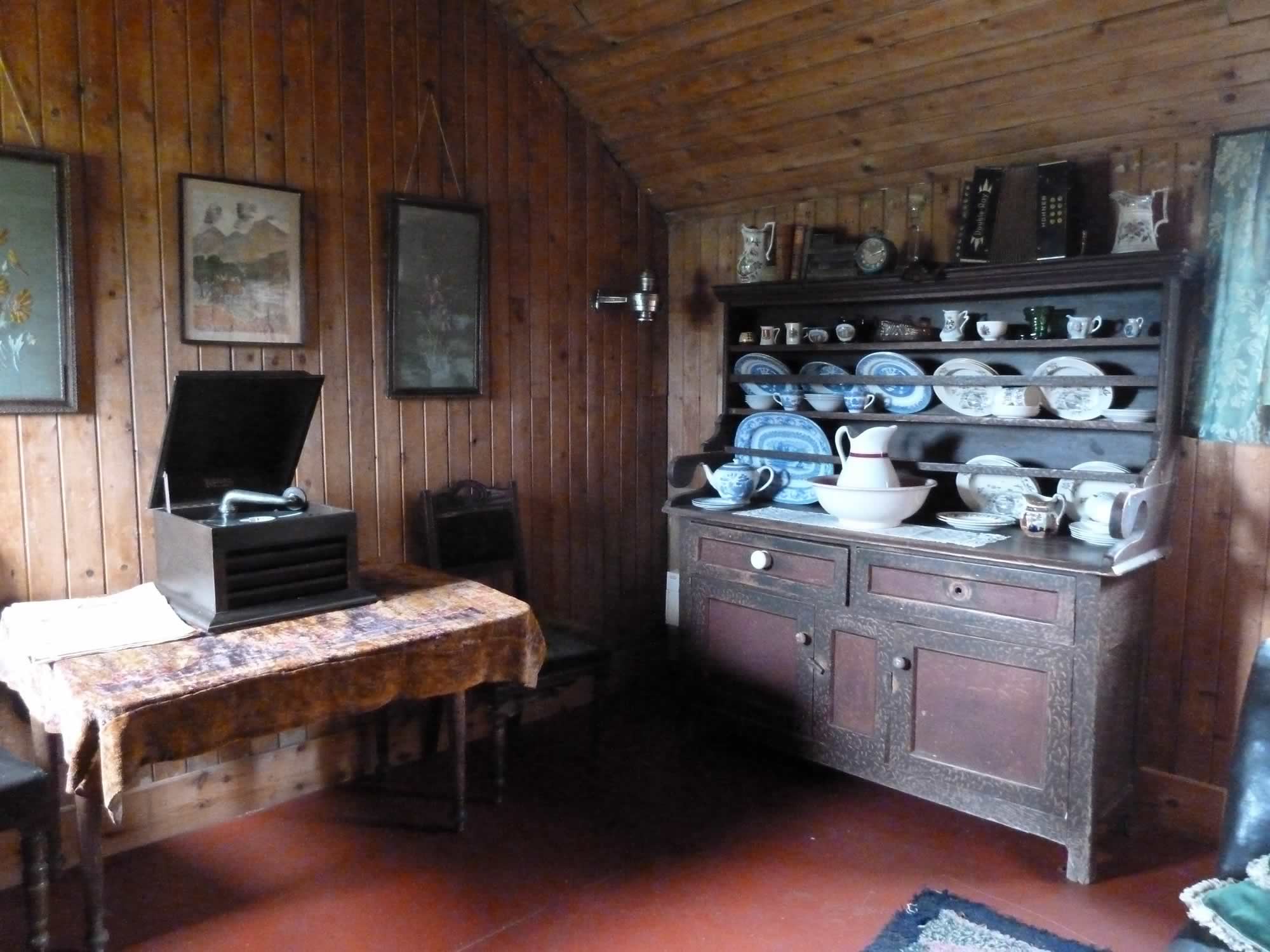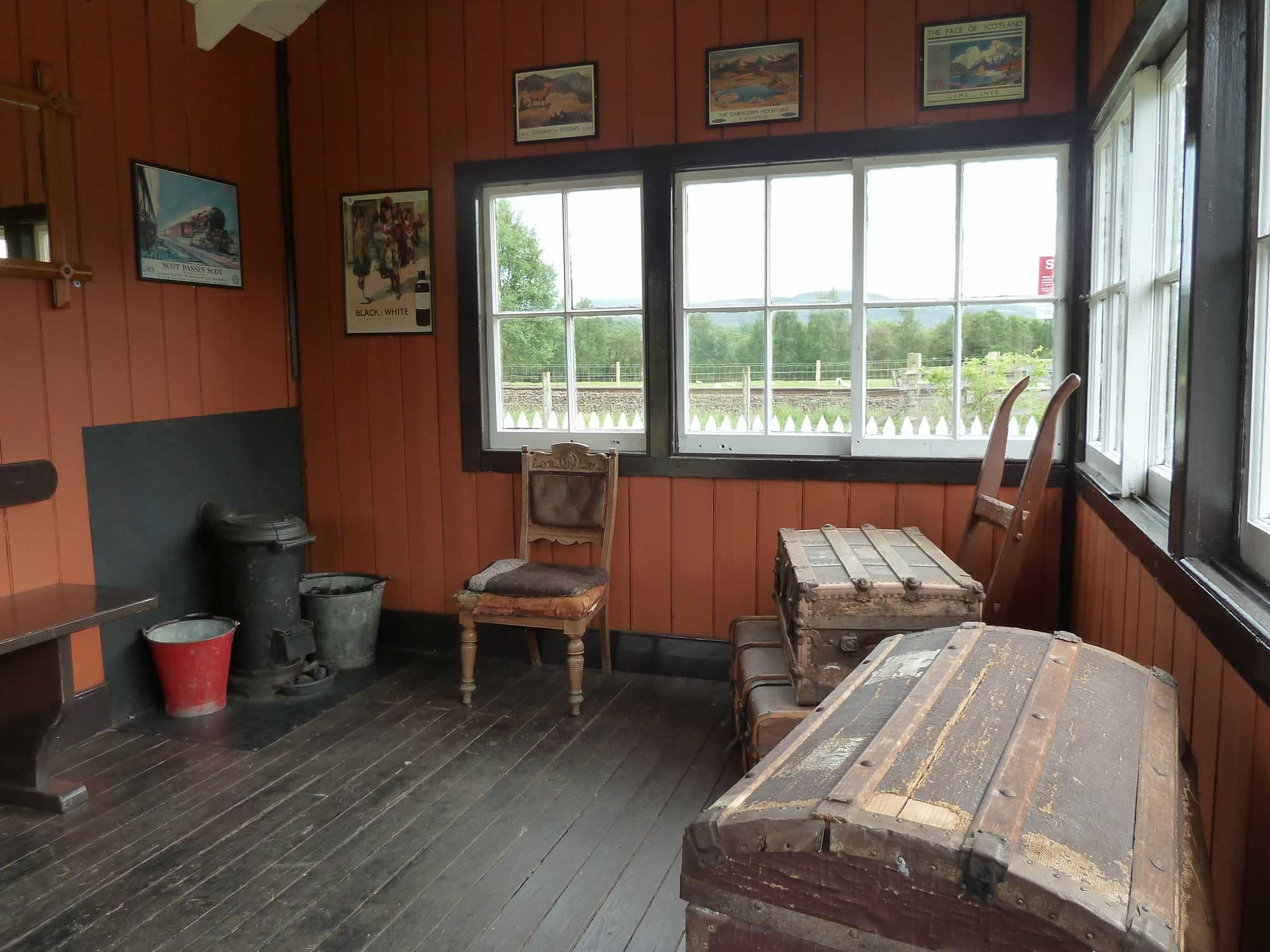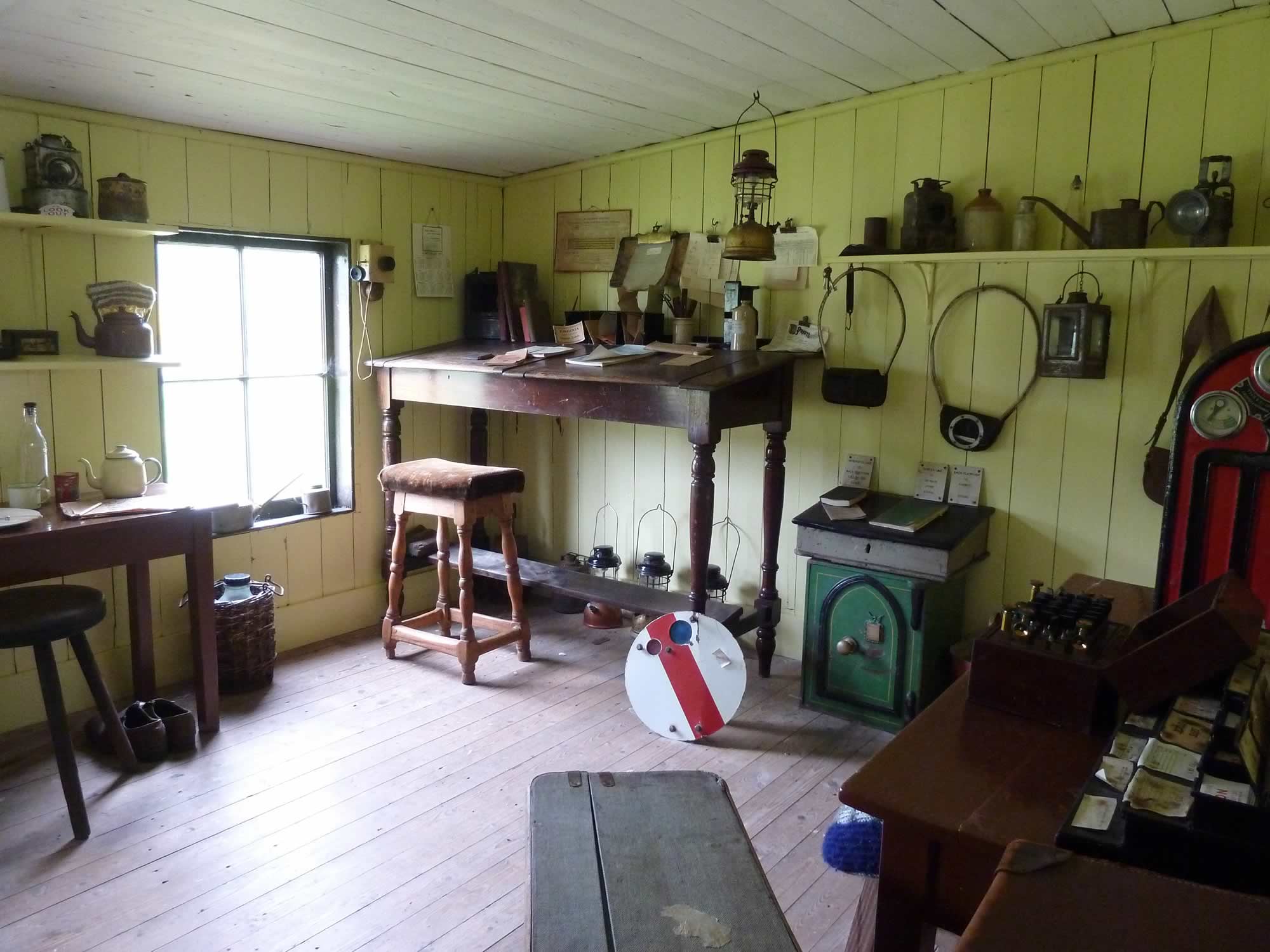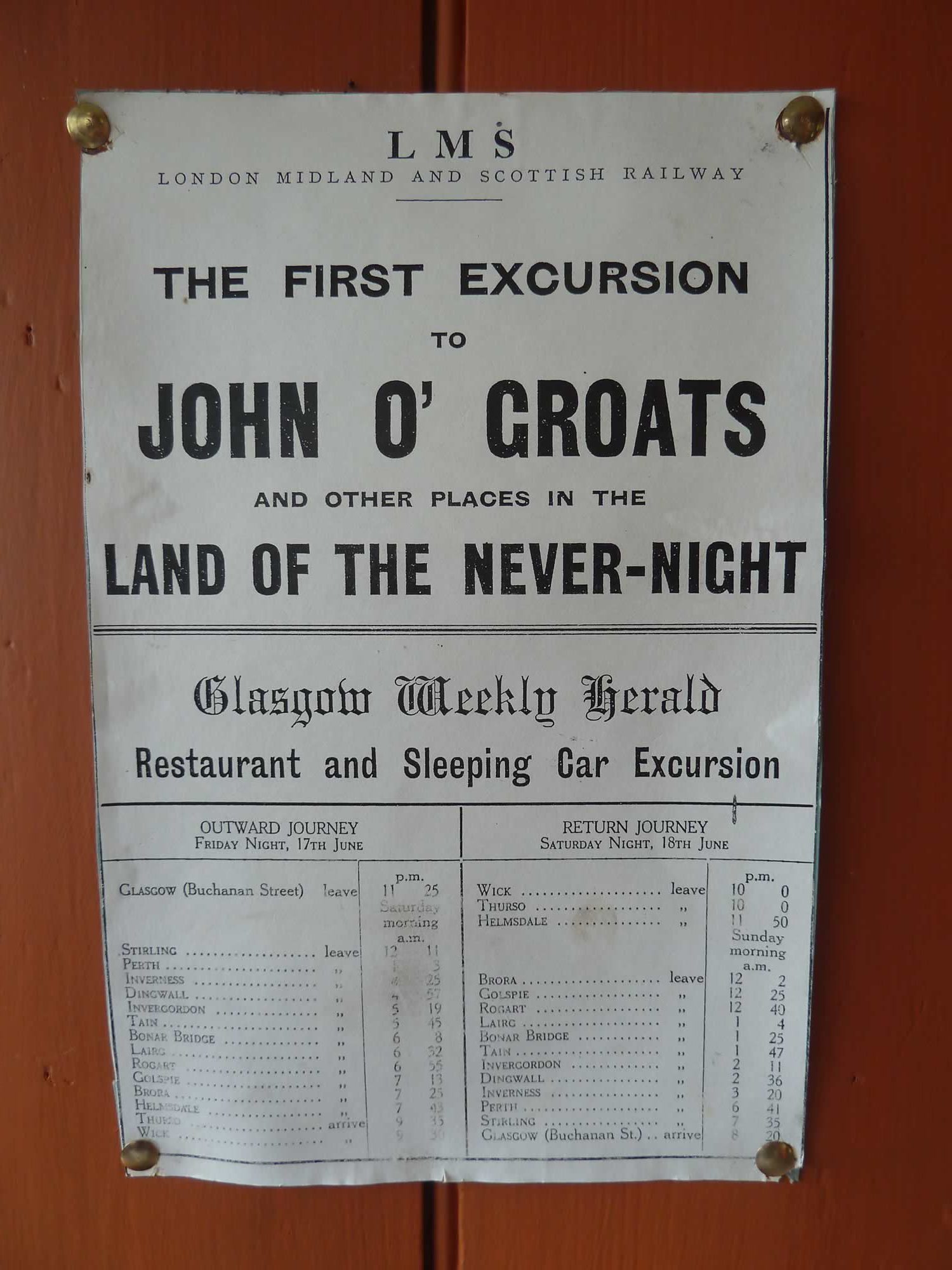Our second day in Kingussie took us to an unexpected place.
On our way back from climbing a Munro the day before, we’d gone past the Highland Folk Museum.
It’s not well sign-posted, so we’d missed it all the other times we’d been in the area, which are quite a few by now.
Getting to the Highland Folk Museum
The B&B owner highly recommended it when we asked him abut it. And so, on Saturday morning we jumped on the bikes and off we went.
The museum is outside Newtonmore, and only a couple of miles from Kingussie, just off the cycle path.
Cycle path between Kingussie and Newtonmore
To see the museum chronologically, we turned right as we got in. We walked through the area called Pinewoods and about ten minutes later we arrived at Baile Gean.
Baile Gean is Gaelic for “Township of Goodwill”, a community of rural tenants.
The first building in Baile Gean
The place transports you back to the 1730s.
You may recognise the buildings if you’ve seen the TV series Outlander. Some of the earlier episodes were filmed here.
The Weaver’s House, on the left
A bit about the Highland Folk Museum
The Highland Folk Museum is Britain’s first open-air museum.
It was set up by Dr Isabel F. Grant. The museum’s first home was on the island of Iona. When it outgrew its allocated land, the collection was moved to Laggan, later on to Kingussie, and finally here to Newtonmore in 1996.
Inside the Tacksman’s House
On a warm June day like this the Township looks like a small paradise. But imagine living here in the winter, surrounded by snow in the long nights.
It’d be a pretty tough life.
A handsome chicken on a quern stone
We walked back through the Pinewoods and got to the Newtonmore Curling Club Hut.
Curling is a winter ice sport that has been played in Scotland for more than four centuries.
Newtonmore Curling Club pond & hut
Inside the club hut there are some curious objects, photos, and extracts from the Laggan Curling Club Minute Book.
My favourite extract, dated 9 February 1876, says: “Match suddenly stopped in consequence of total eclipse of sun”. What a brilliant excuse.
A charming read on the hut wall
In the Middle Village
As you walk out of the Pinewoods you get to the Joiner’s Workshop.
Like all other exhibits in this open air museum, it strikes you as a scene frozen in time. You can picture the joiner working on his chairs, tables and bird houses.
The Joiner’s Workshop
The Tweed Cottage was built in the 1900s as a summer house.
The current interior shows what the shop and workshop looked like in the 1950s.
I guess tastes have changed somewhat. I couldn’t decide which of the spools on the shelves I disliked the most. I’m afraid I couldn’t have ordered any tweed from Mr Gowans, the owner.
Craig Dhu Tweed Cottage, outside & inside
A note about the weather:
Like the day before, the forecast warned us about rain, and even thunderstorms. On and off, there were some threatening clouds above us, but all we got was a light, short-lived drizzle.
When we arrived, the museum was a lot less busy than we’d expected for a Saturday. And after the drizzle most people seemed to disappear.
An old steam engine
The school was the most popular building in the whole museum.
It has been set up to show what a single teacher school looked like in the late 1930s.
Knockbain School – with teacher included
The real teacher inside made the classroom come to life.
In the classroom
More cottages
The Highland Folk Museum stretches one mile from end to end. This beautiful cottage with garden is roughly in the middle.
Highland Cottage & garden
And this is what the cottage looks like inside.
Inside the Highland Cottage
There are a few carts in the museum. Some were larger, but I found this to be the most attractive.
One of several horse-drawn carts
Like other buildings in this open-air museum, this summerhouse was constructed with re-used railway track sleepers.
Deluaine Summerhouse
There’s an outside toilet on the right hand side. And inside there are two rooms. This one is the bedroom:
The Deluaine Summerhouse bedroom
And this is the kitchen and dining area.
According to the museum booklet, local homeowners often rented out their homes in the tourist season. And they, in turn, would stay in their summer houses.
The Deluaine Summerhouse kitchen
Nearby, a small building called the Loom Shed houses this awesome weaving machine.
A Hattersley Hand Loom
In Lochanhully House
With the Lochanhully House you get to the 1950s.
Look at the photos below. At first sight it might look like this house belongs to a distant past, but I’ve seen dozens of properties in Edinburgh with similar bathrooms.
And you can still find plenty of kitchens not too dissimilar to this one.
The pine wood Lochanhully House
Inside Lochanhully House
The Lochanhully House bathroom
The Lochanhully House kitchen
The Lochanhully House sitting room
The Lochanhully House nursery
The Lochanhully House bedroom
The inhabitants
To me, what made the Highland Folk Museum most memorable were its living inhabitants.
There are men and women dressed up as farmers, weavers, soldiers, and so on. And also goats, chickens and sheep. Scruffy, but cute.
Three Highland Folk Museum inhabitants
Without bothies, the Scottish Highlands wouldn’t be the same. And perhaps we wouldn’t venture as often into the wild, if they weren’t there.
Some bothies are quite a bit larger than this one. Others are less inviting, with broken windows and even asbestos.
And then there are those of a higher class, like the one in Glen Feshie, with an outside toilet.
Shepherd’s Bothy
What we haven’t seen yet, though, is a bothy that comes with a cooked breakfast. That’ll be the day.
Inside the Shepherd’s Bothy
This stone farmhouse was the principal farm residence. In the tourist season it’d be rented out, as it was the custom in the area.
Aultlarie Farmhouse
The post office had some curious items. One thing that surprised us was the number of parcels containing eggs.
Did they ever arrive uncracked?
Inside the Glenlivet Post Office
A bit about Kingussie
Earlier that day, before getting to the museum, we’d cycled around Kingussie for a bit.
The large houses up the hill looked stunning in the morning sun. No wonder the wealthy Glasgow and Edinburgh families spent their summers here.
The old ads for local houses to let show just how popular Newtonmore and Kingussie were as a tourist destination.
Advertisements for local services & accommodation
In wasn’t uncommon in the Highlands for houses to have a local shop, like this one.
Kirk’s Store
On the wall next to the sweet shop I spotted this great ad.
An enduring advertisement – Nothing’s changed in marketing
The upstairs rooms in the Aultlarie Farmhouse were not open to the public, but this downstairs public room is a gem.
You can picture your granny sitting in that armchair.
The Aultlarie Farmhouse living room
According to the museum curators, this is what a garage would have looked like in the late 1930s.
Apart from the corrugated iron and the cute tractor, I guess it’s not that different from ours in Edinburgh.
The corrugated iron garage
And here’s another awesome exhibit.
An original Shellmex-BP Mark IV fuel pump
The notice outside the smokehouse says:
“Smokehouses like this were in common use in the late nineteenth century on the great sporting estates in the Highlands. Game and fish caught on the estate could be cured this way”. Cool.
The game & fish smokehouse
The Aultlarie Tin Cottage
This is the last house we went in. It had two rooms, plus a bathroom that wasn’t opened to the public.
According to the museum booklet, the farm workers used it. And the Grant family, the owners, would move in when they rented out Aultlarie farmhouse to tourists.
The Aultlarie Tin Cottage bed recess
The Aultlarie Tin Cottage parlour
By the time we got to the waiting room, we’d been walking for several hours, and I’d taken pictures of everything that caught my eye.
Don’t you just love those trunks?
The Railway Waiting Room
And what about those lanterns?
Area next to the waiting room
I had to take this final photo. I couldn’t resist that marvellous phrase:
“and other places in the land of the never-night”.
A delightful advertisement on the waiting room wall
I hope you can visit the Highland Folk Museum one day. It’s a magic place.
I took all the photos with the Panasonic.
